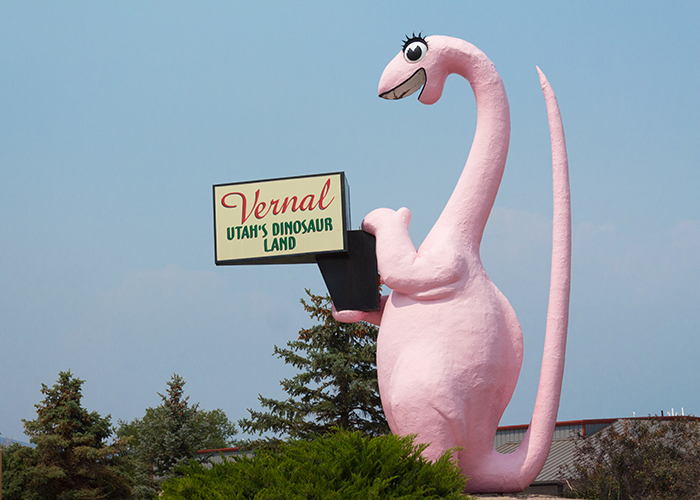 Previous Day |
Craig, CO → Salt Lake City, UT 289.0 mi (465.1 km) |
 Next Day |
Happy dawn of time, everyone!
Today, I’m embarking into an ancient park, which dates back long, long, long before there were lines separating Colorado and Utah. It’s a place that has stirred wonder and imagination across the country, and I’ll get to that, but first, look at these two neat dinosaurs I found in Dinosaur, Colorado!
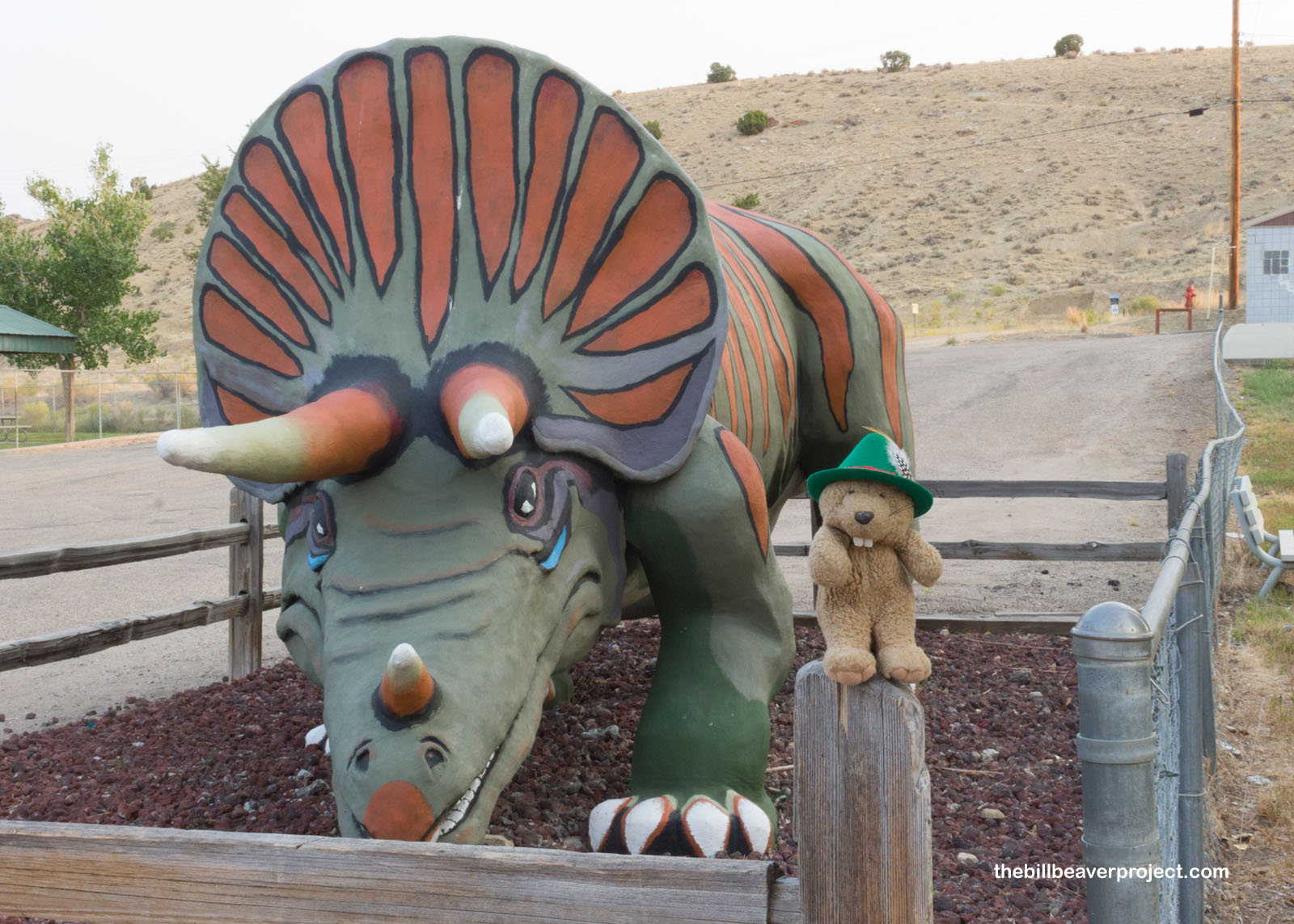 |
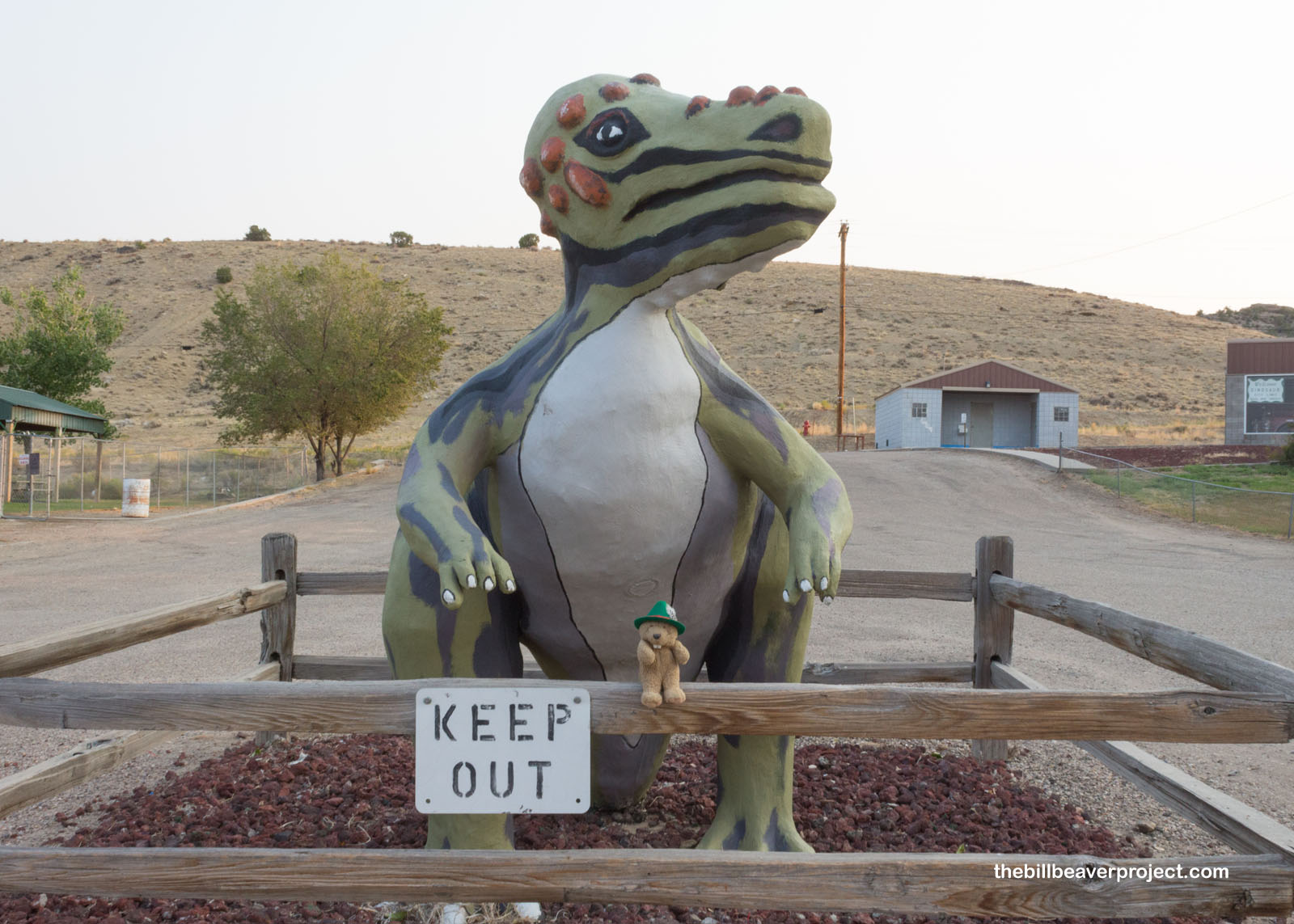 |
Triceratops and Pachycephalosaurus are both fun, but neither of them were found in the monument I’m visiting today! They were both Cretaceous dinosaurs, and the ancient reptiles of Dinosaur National Monument were all Jurassic! More on that in a second, but first, I have some hiking to do!
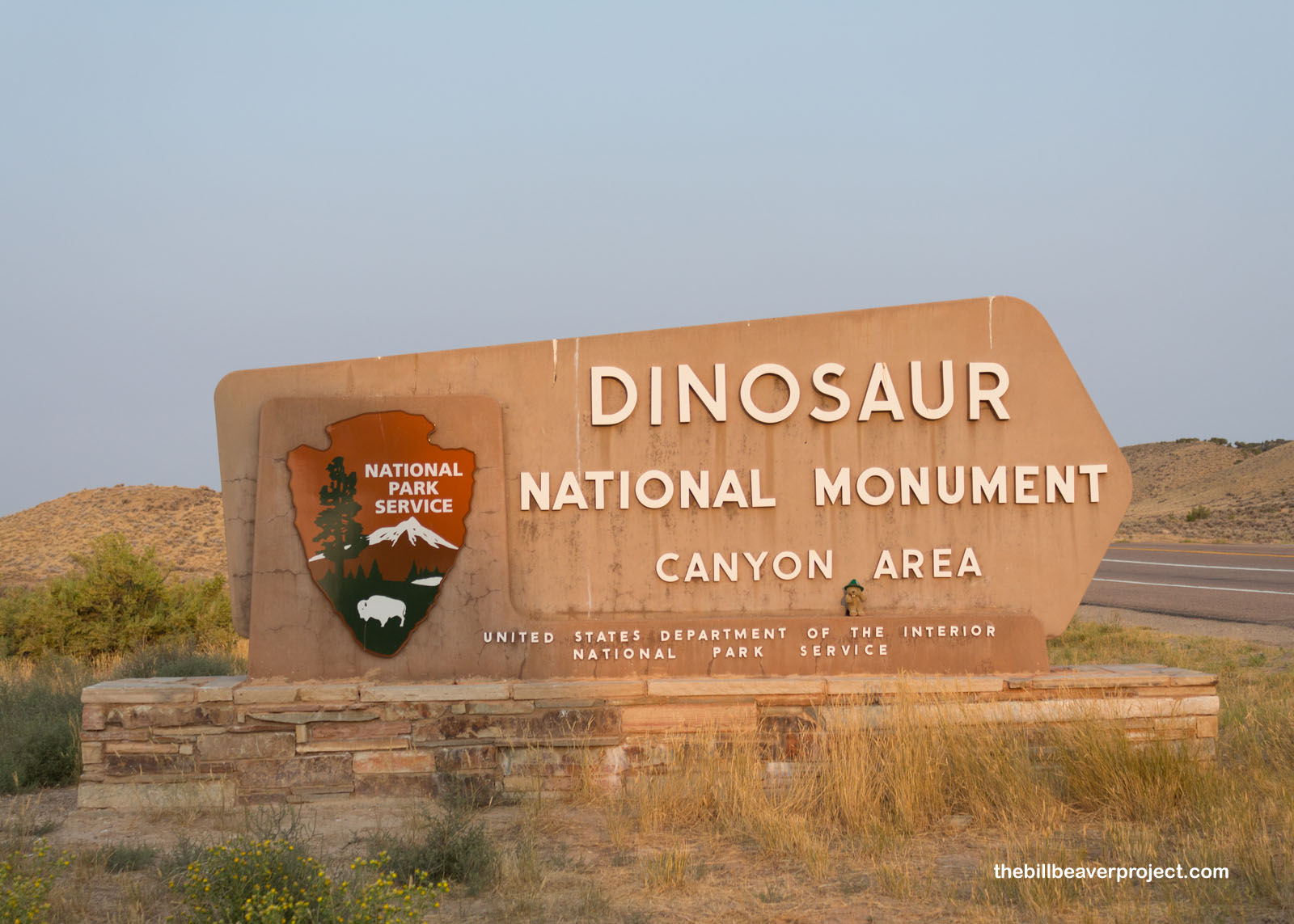 |
Dinosaur National Monument is divided into two parts: the Utah part is mostly dedicated to fossils, while the Colorado part is mostly recreation! The Green and Yampa Rivers flow through here, carving glorious canyons and making this park a major rafting destination. My time here wasn’t going to allow for rafting, though. I had to settle for some overlooks of the Island Park and Rainbow Park districts, which were still super pretty!
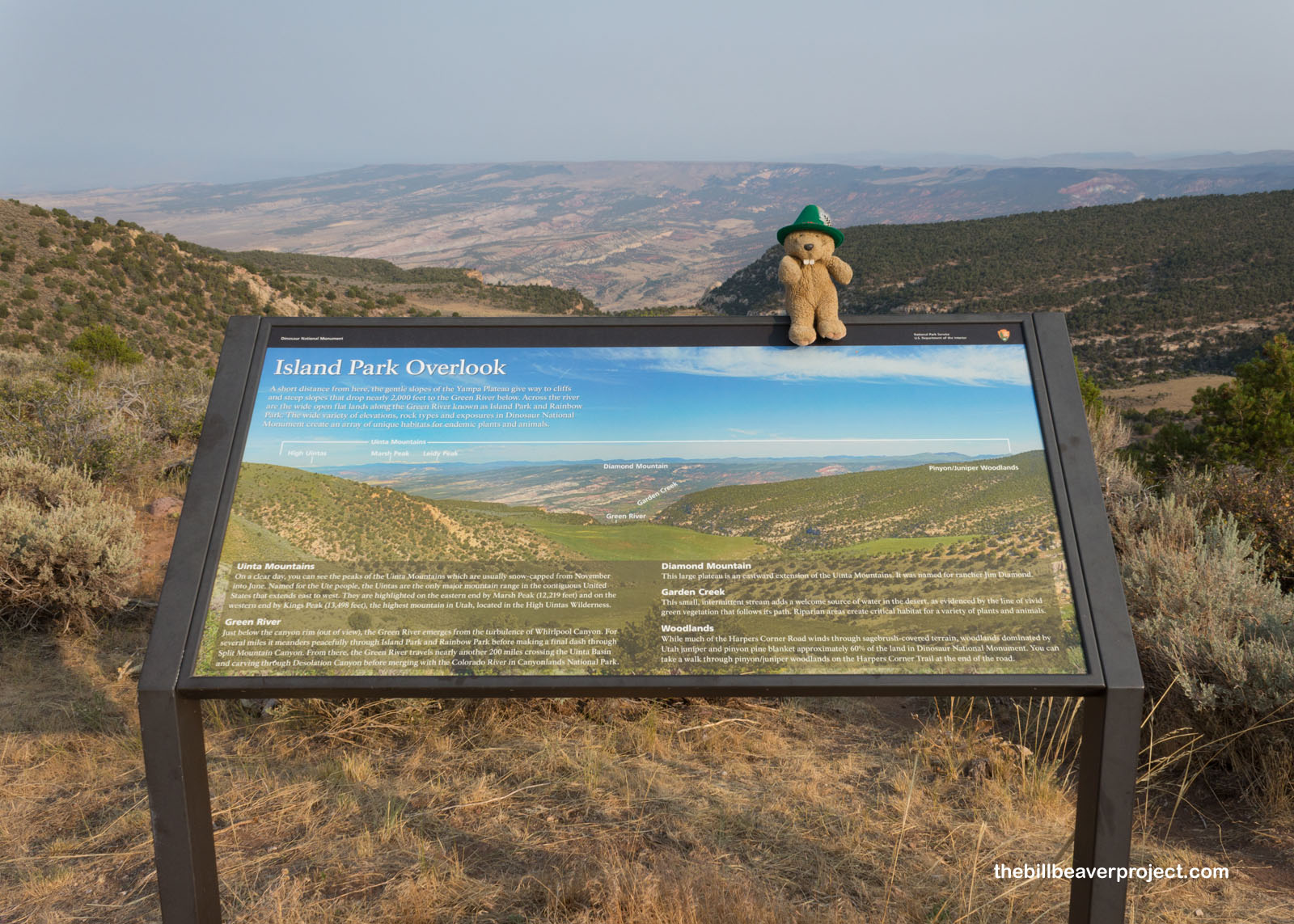 |
Also worth a pause were the juniper trees, which were loaded with berries! This species, Juniperus osteosperma, doesn’t have tasty, edible berries like the Juniperus californica I sampled at Tomo-Kahni State Park, so I had to go without a snack for this morning. Nevertheless, I love seeing flourishing juniper berries in a time when so many juniper forests are threatened by bark beetles!
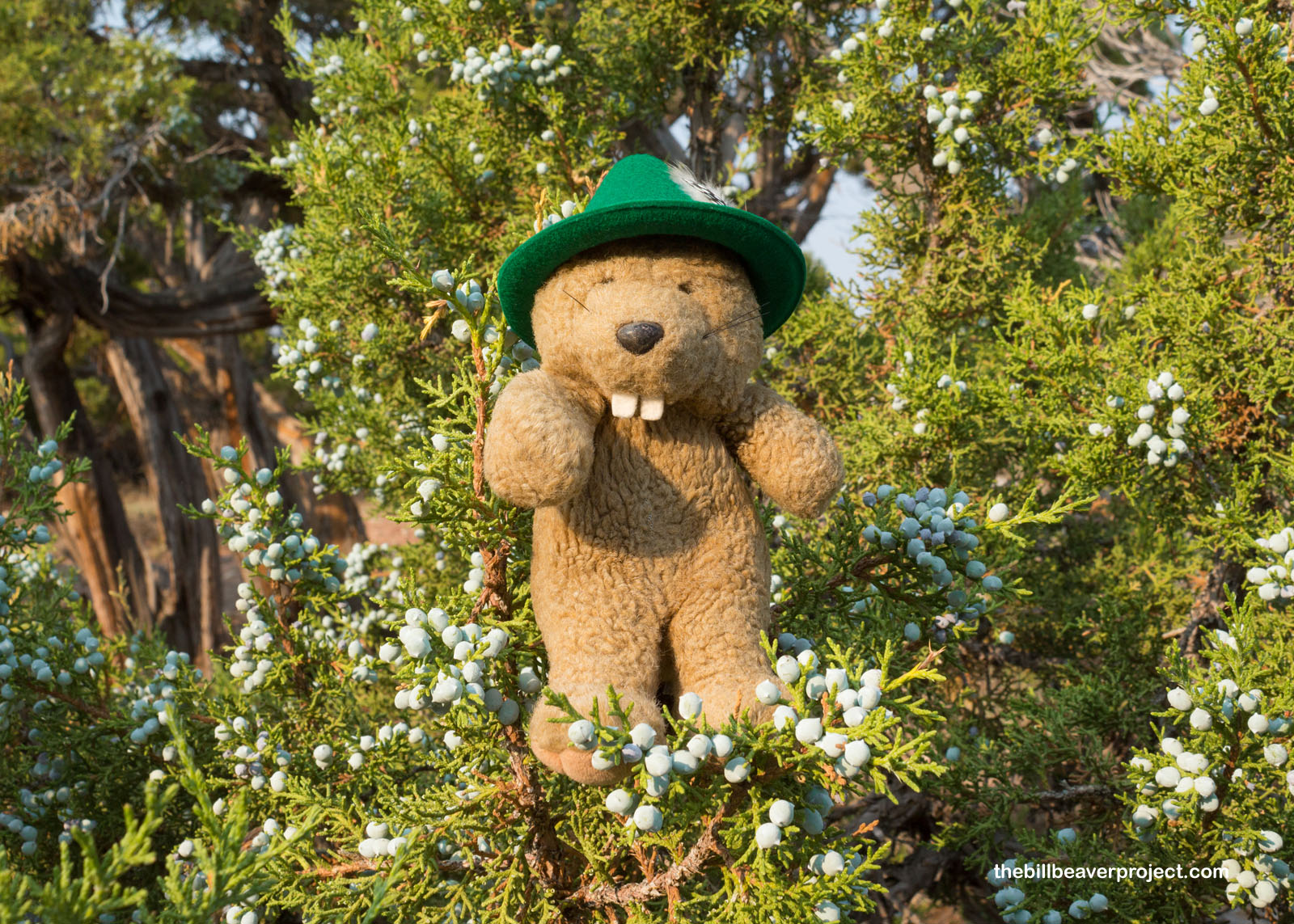 |
I paused to check out the Echo Park overlook where Pool Creek flows into the Green River! Down below, hidden behind the junipers and pinyons, was Chew Ranch, a Nationally Registered homestead that operated by special permit here from 1900 to 1949! There wasn’t a trail from here to check it out, so I made for the next one at Harpers Corner!
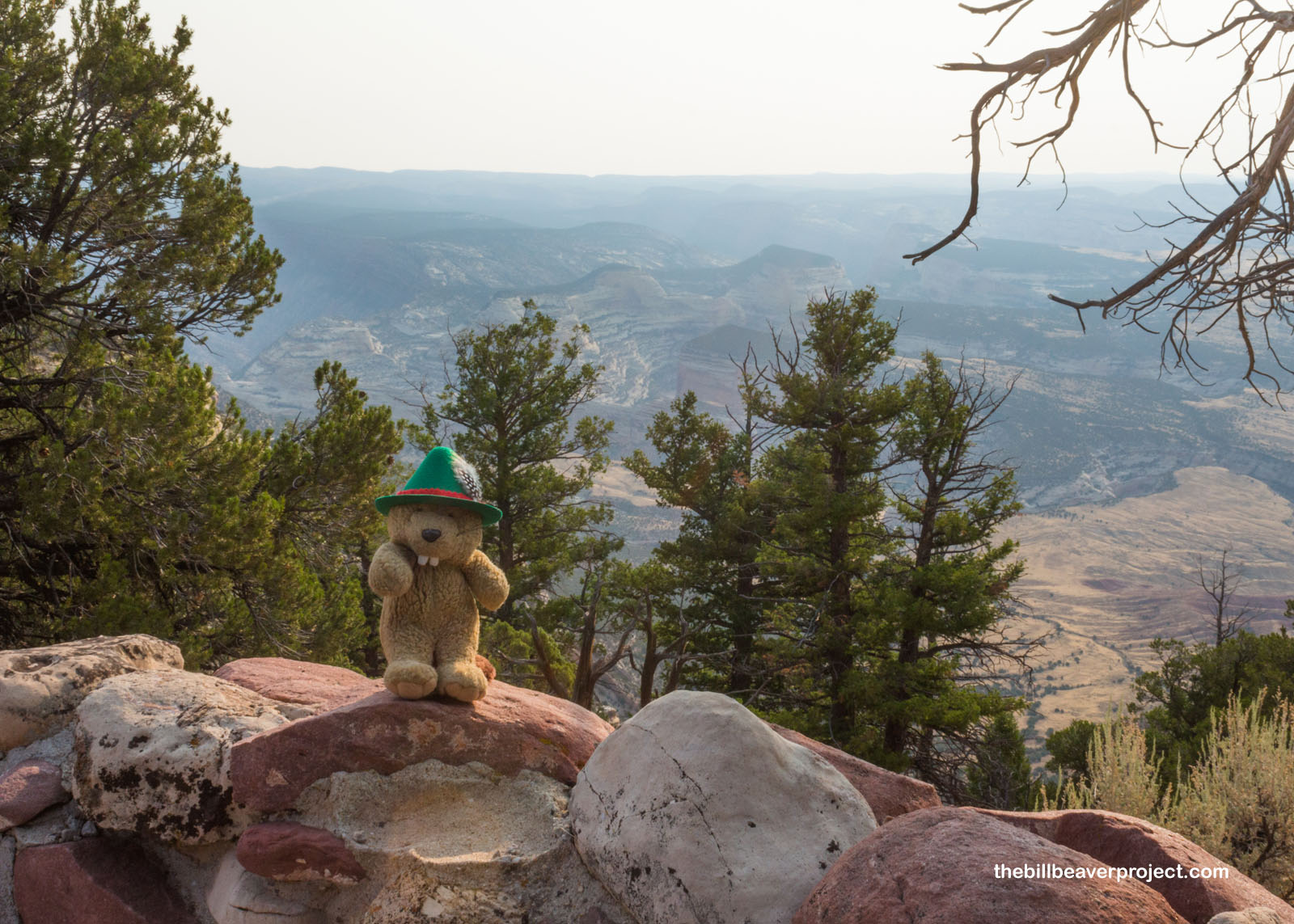 |
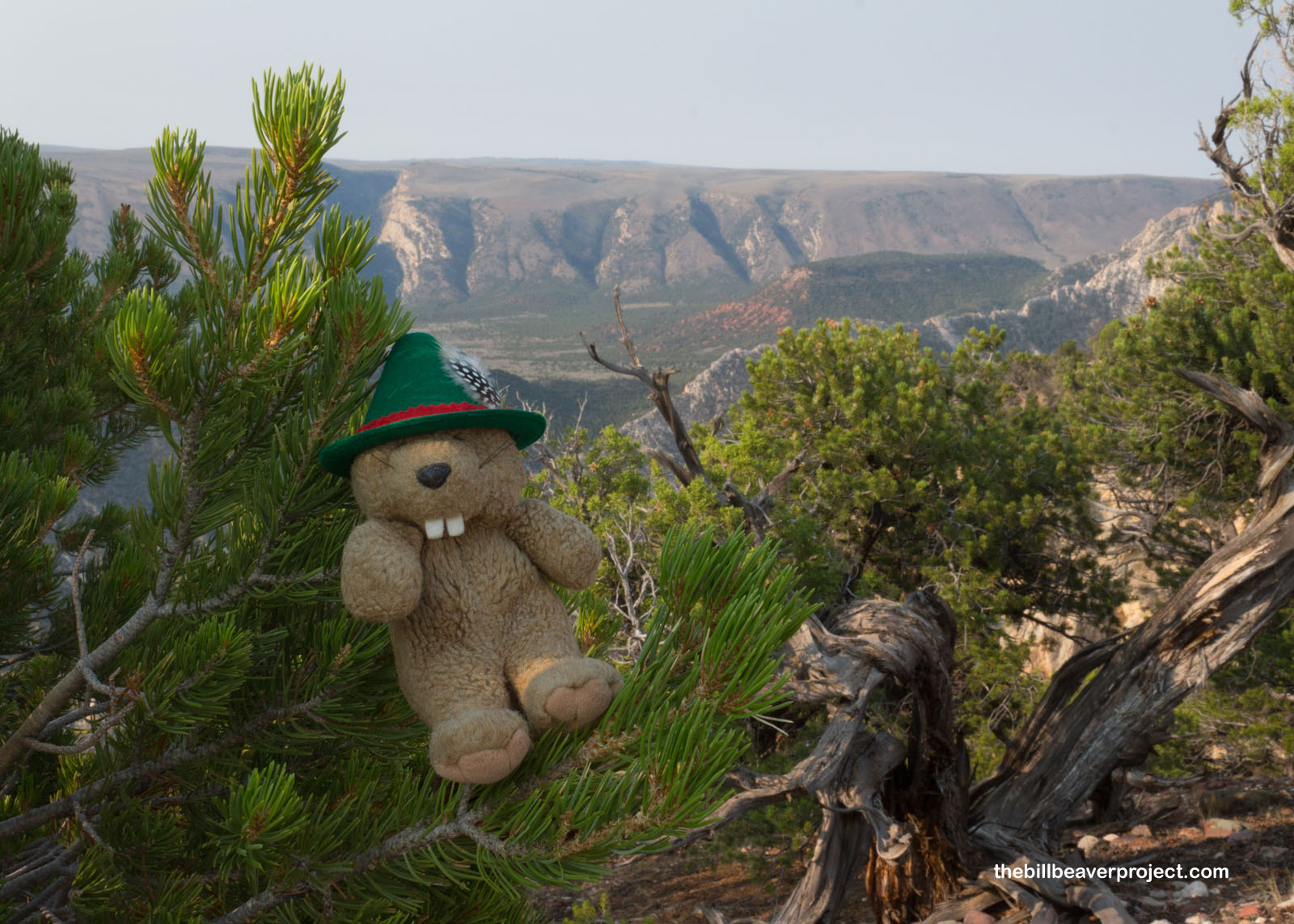 |
This 3-mile out and back trail was rumored to have some pretty spectacular views of the canyons carved by the Green River, so before it got too hot, and before my timed entry at the monument’s famous quarry came up, I set off!
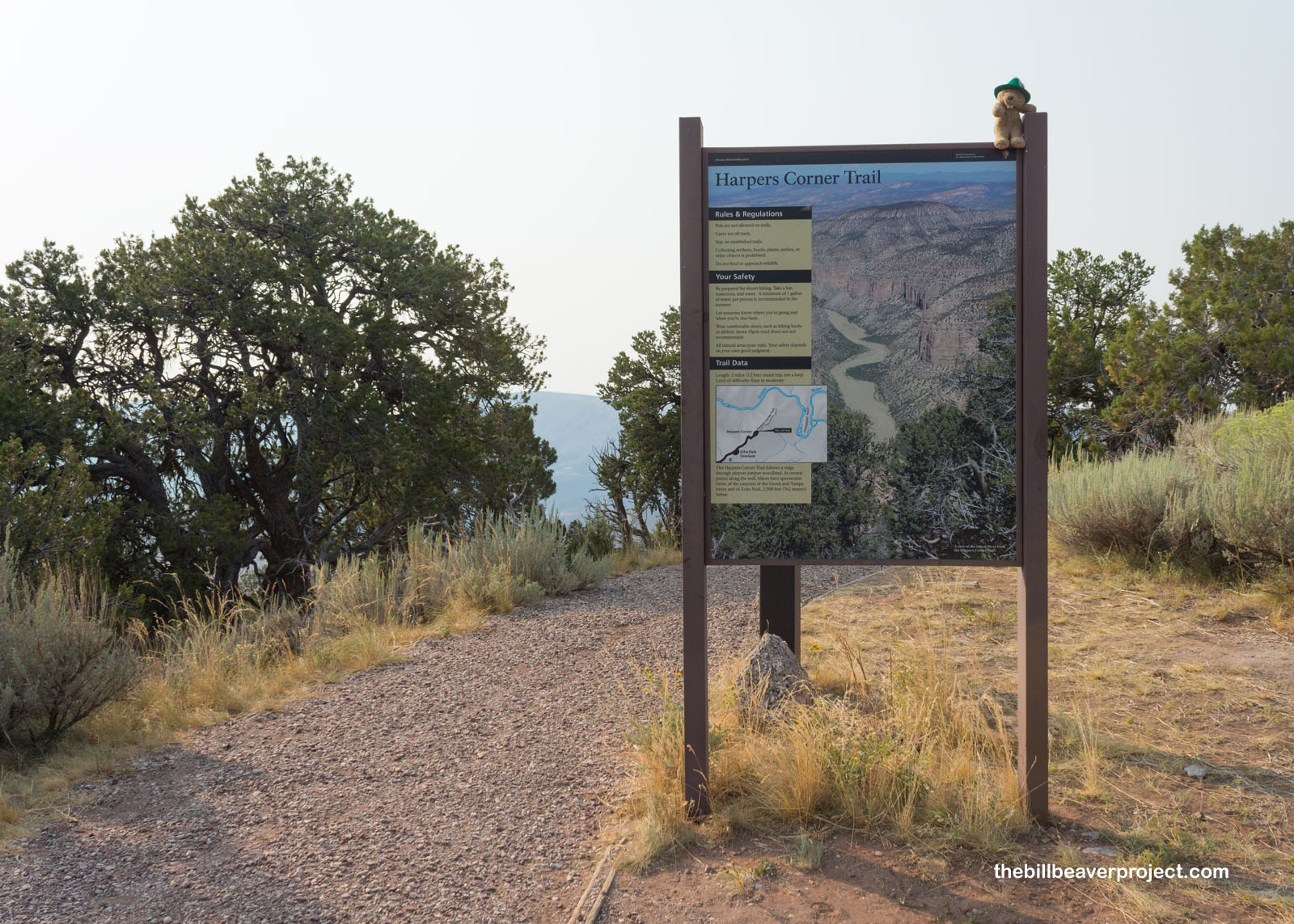 |
The trail was a perfect mix of flat stretches and gentle downward slopes, the kind you need when waking up in the morning! I passed through juniper and pinyon woodlands with no one else around for miles. What a nice breath of fresh air!
 |
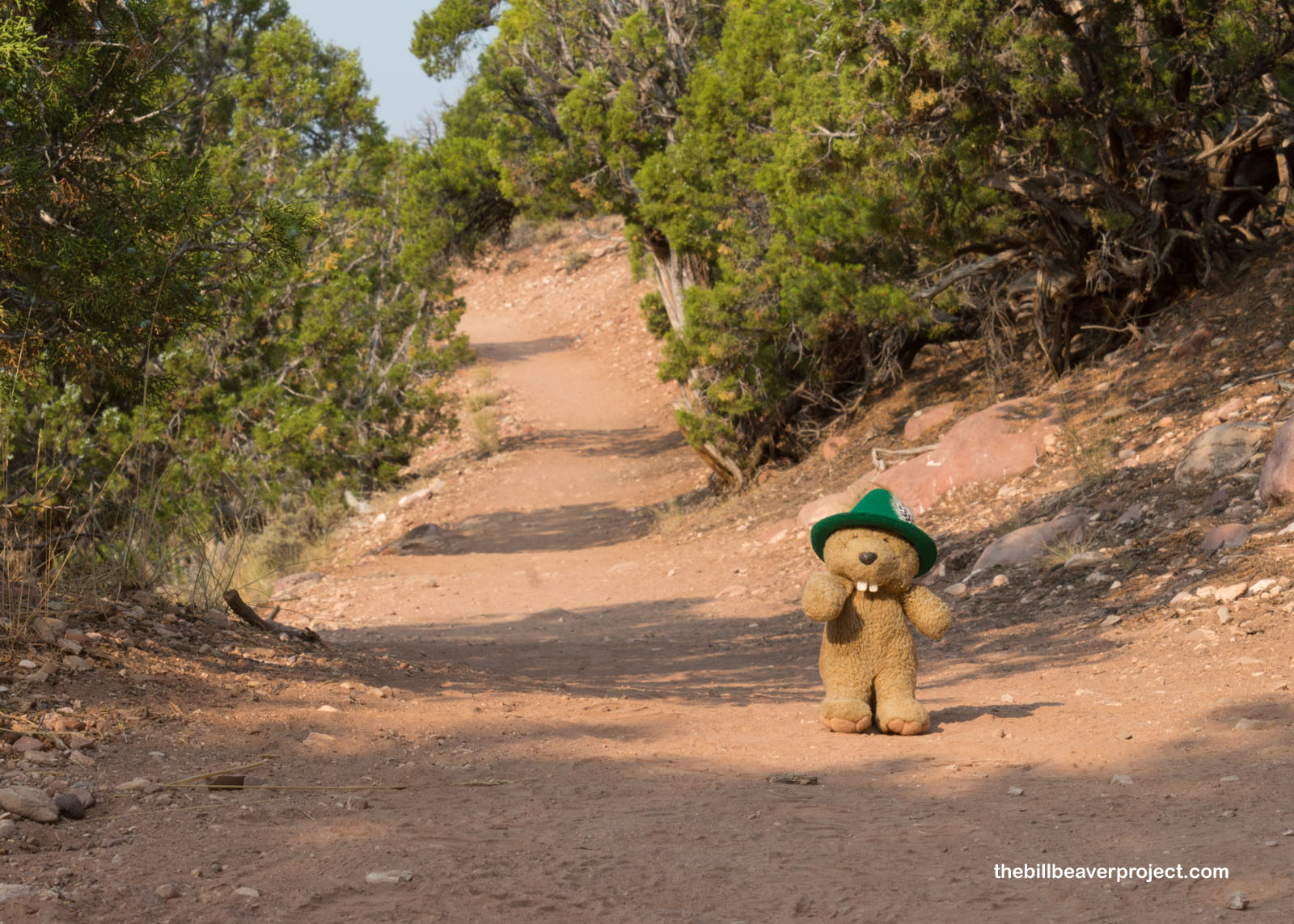 |
I got my first great views about a mile in, overlooking where John Wesley Powell, the one-armed Union commander turned explorer, first navigated the Green River in 1869! Along the way from Green River, Wyoming (now Flaming Gorge) to St. Thomas, Nevada (now Lake Meade), the expedition faced dangerous rapids, the loss of a boat, and all kinds of infighting, but they were the first expedition to float all the canyons carved by the Green and Colorado Rivers from start to finish!
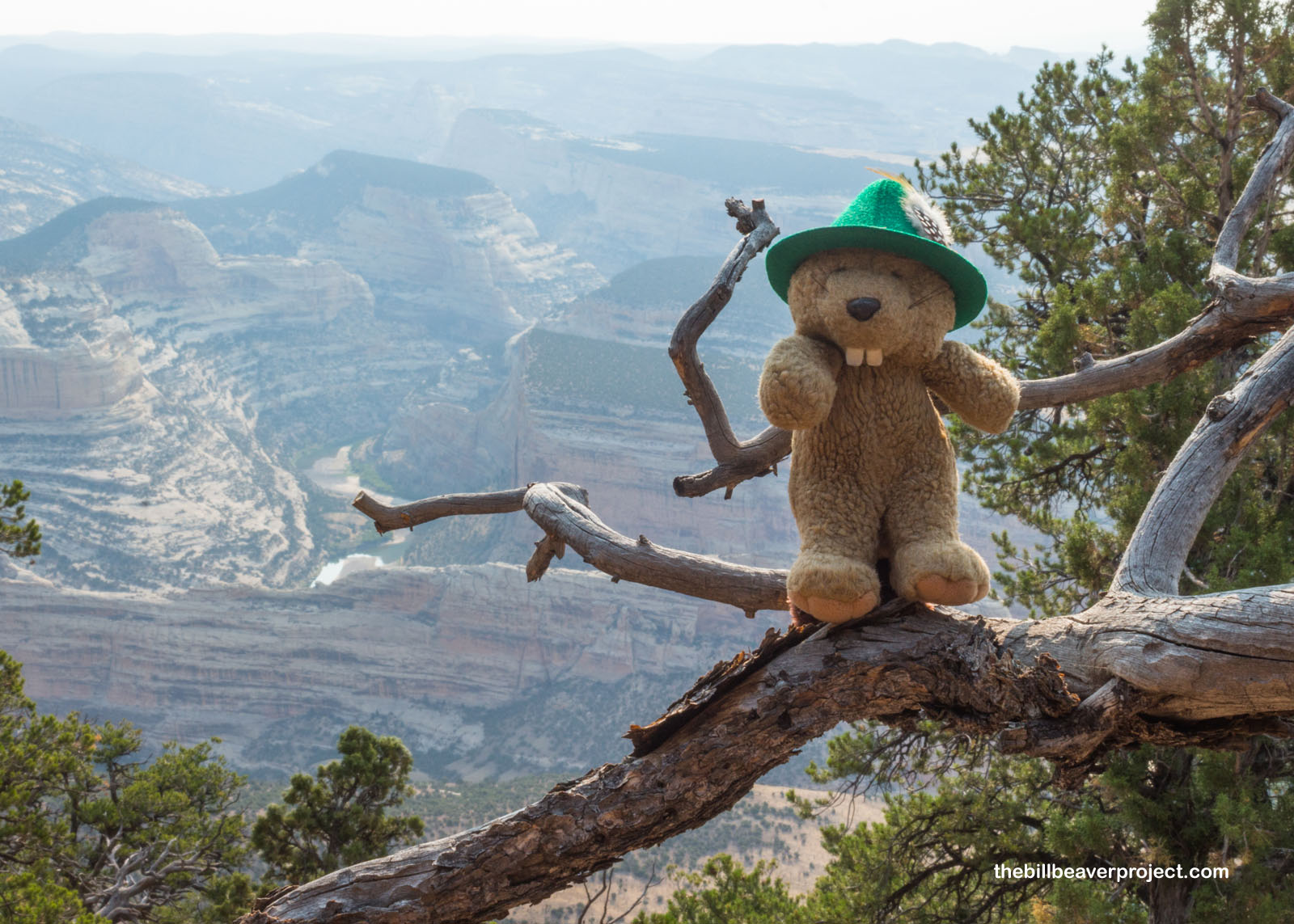 |
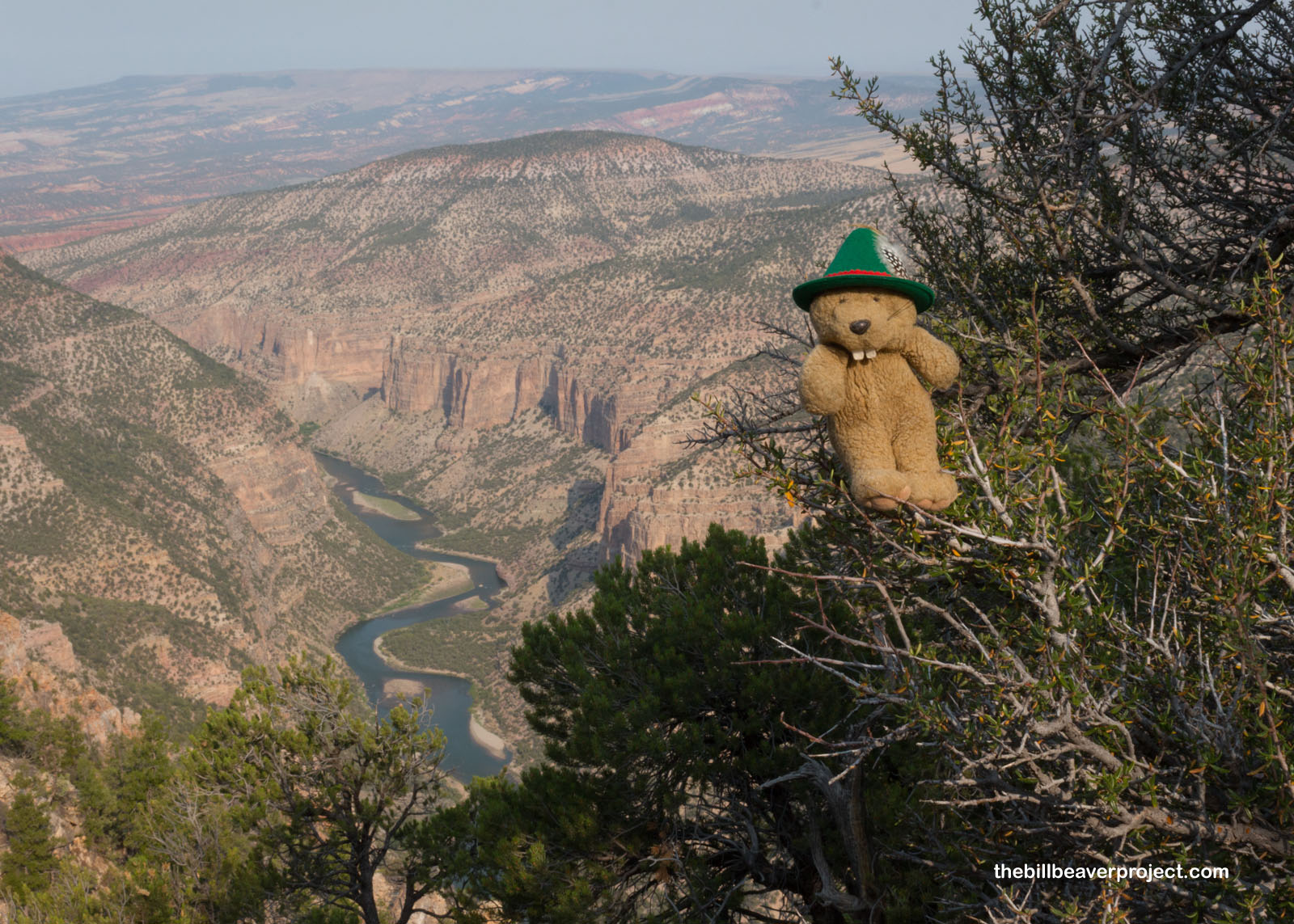 |
At last, I came to the end of the trail, a fenced-off viewpoint with occasional bursts of wind that made me nervous! Still what a sight to see this space so empty! Could it have been that I was here before the weekend during a pandemic? I wasn’t going to question it too deeply.
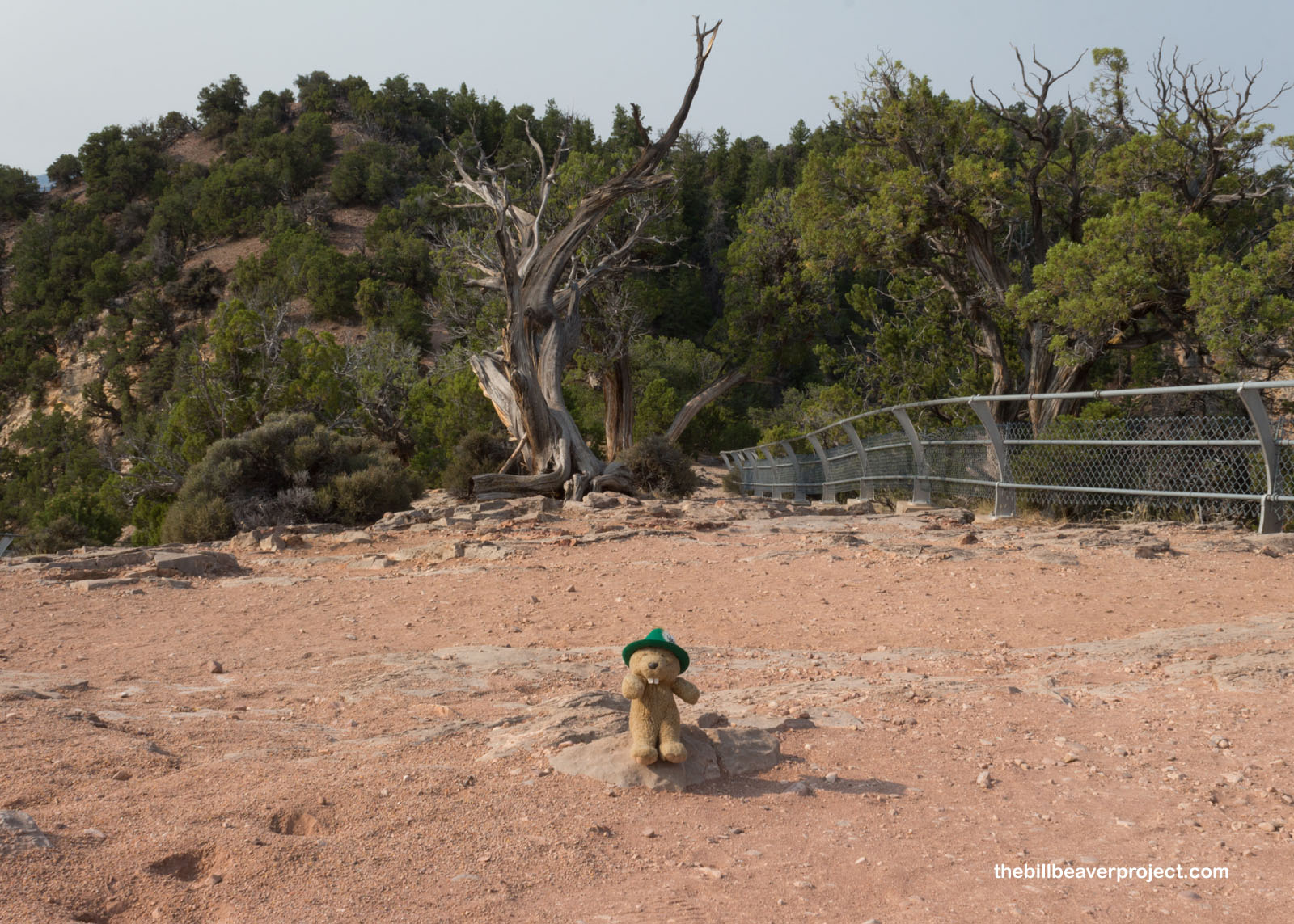 |
Instead, I took in more views of the Green River’s handiwork, muffled a little by the still burning wildfires in western Colorado. All around, swallows made the most of the morning breezes, whooshing up and down the steep canyon faces! What was scary for me was a wild ride for those swallows!
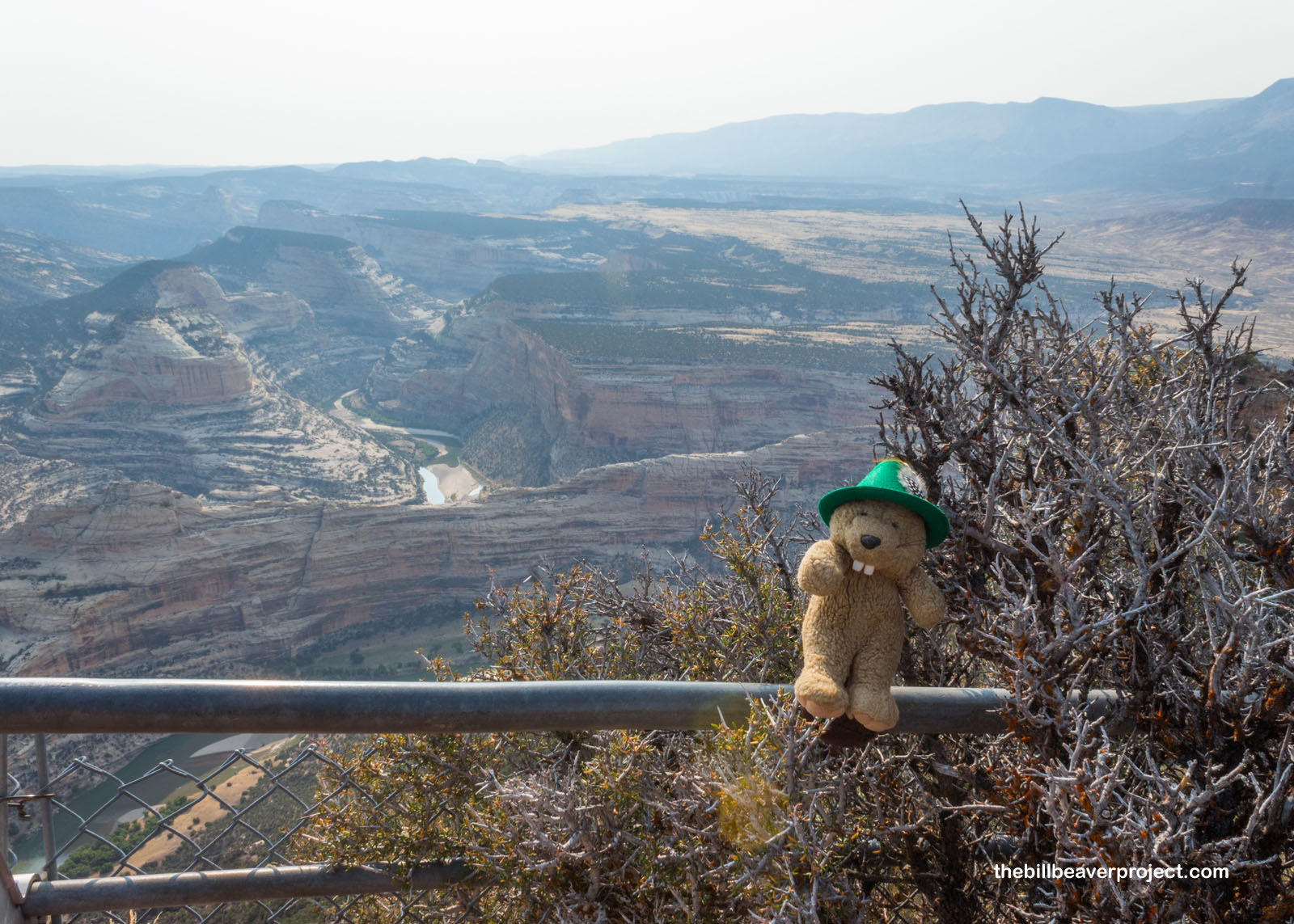 |
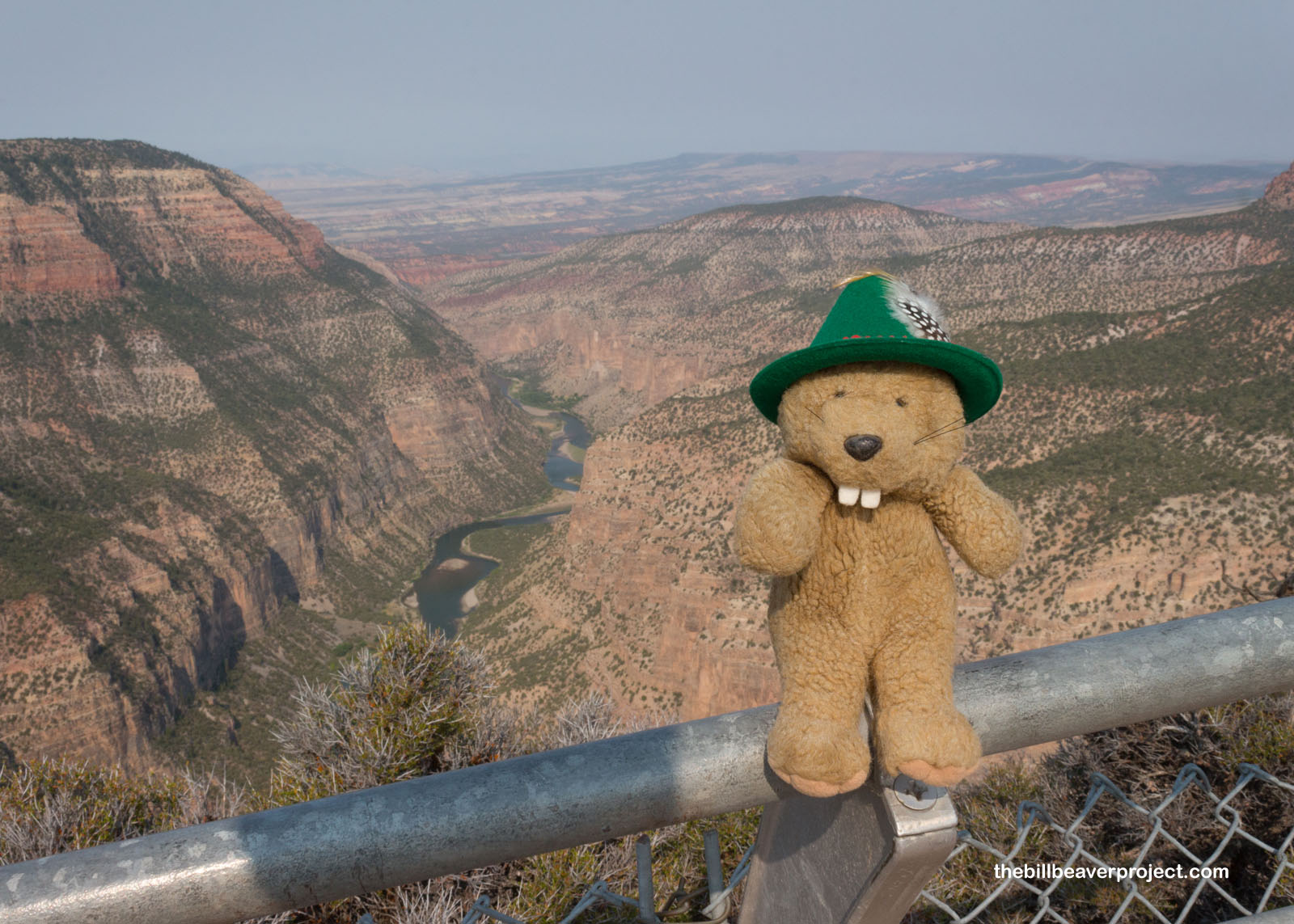 |
There are no dinosaurs in this part of Dinosaur National Monument, because it was part of an ancient sea bed. Instead, the whole viewing area is full of sea creatures like brachiopods and crinoids, preserved in mud that turned to rock and is now far, far, far above the sea! Neat though these were, what would the point of visiting Dinosaur National Monument have been if I didn’t see any dinosaurs?! It was time to head to the Utah side!
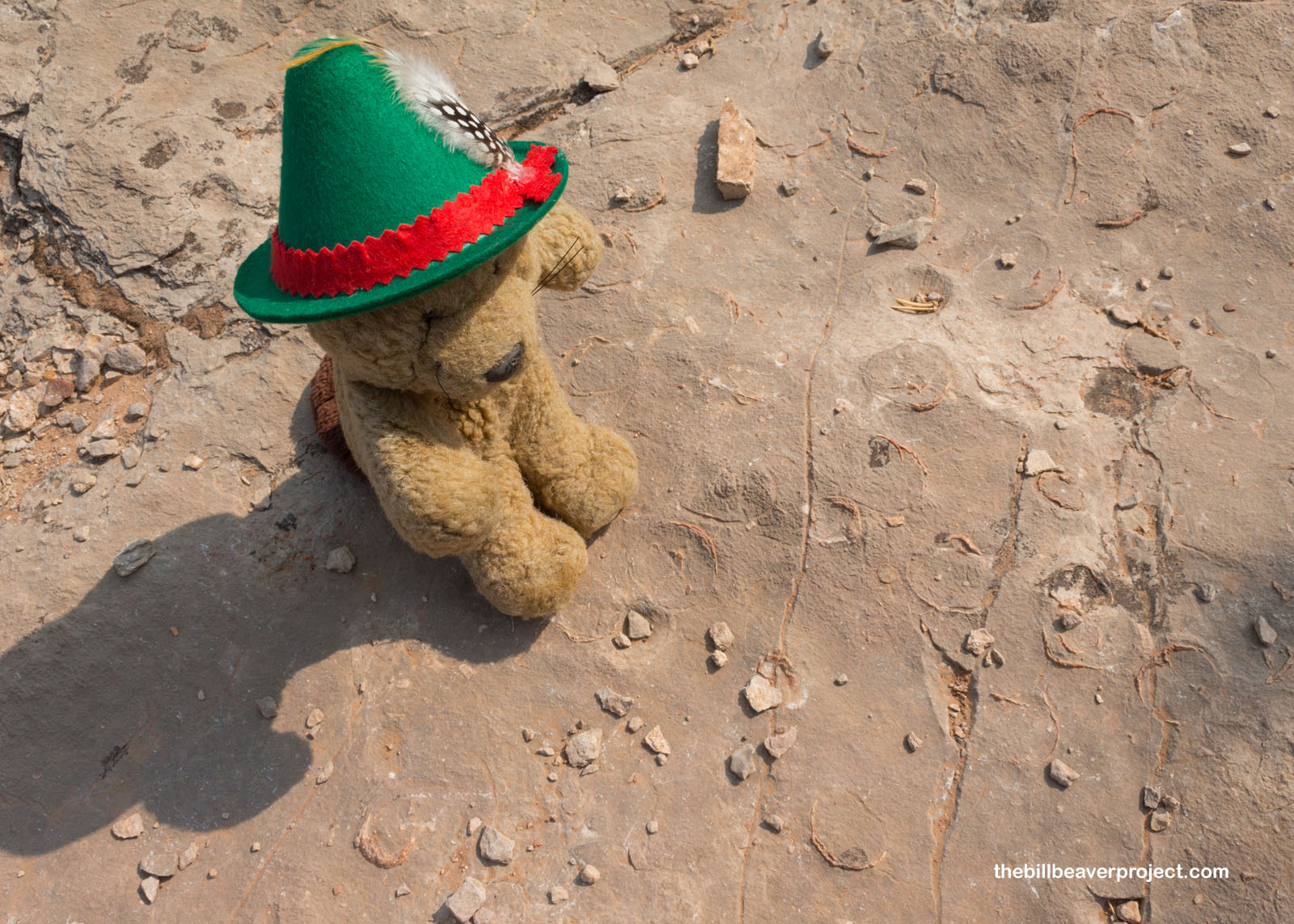 |
After crossing the state line and passing through the town of Jensen, I found my first Utah dinosaur: Doris the Apatosaurus! This well dressed sauropod is so tall she puts the haute in haute couture! Normally, she welcomes visitors to the Intermountain Natural History Association bookstore, but it looked closed today, probably because of the pandemic.
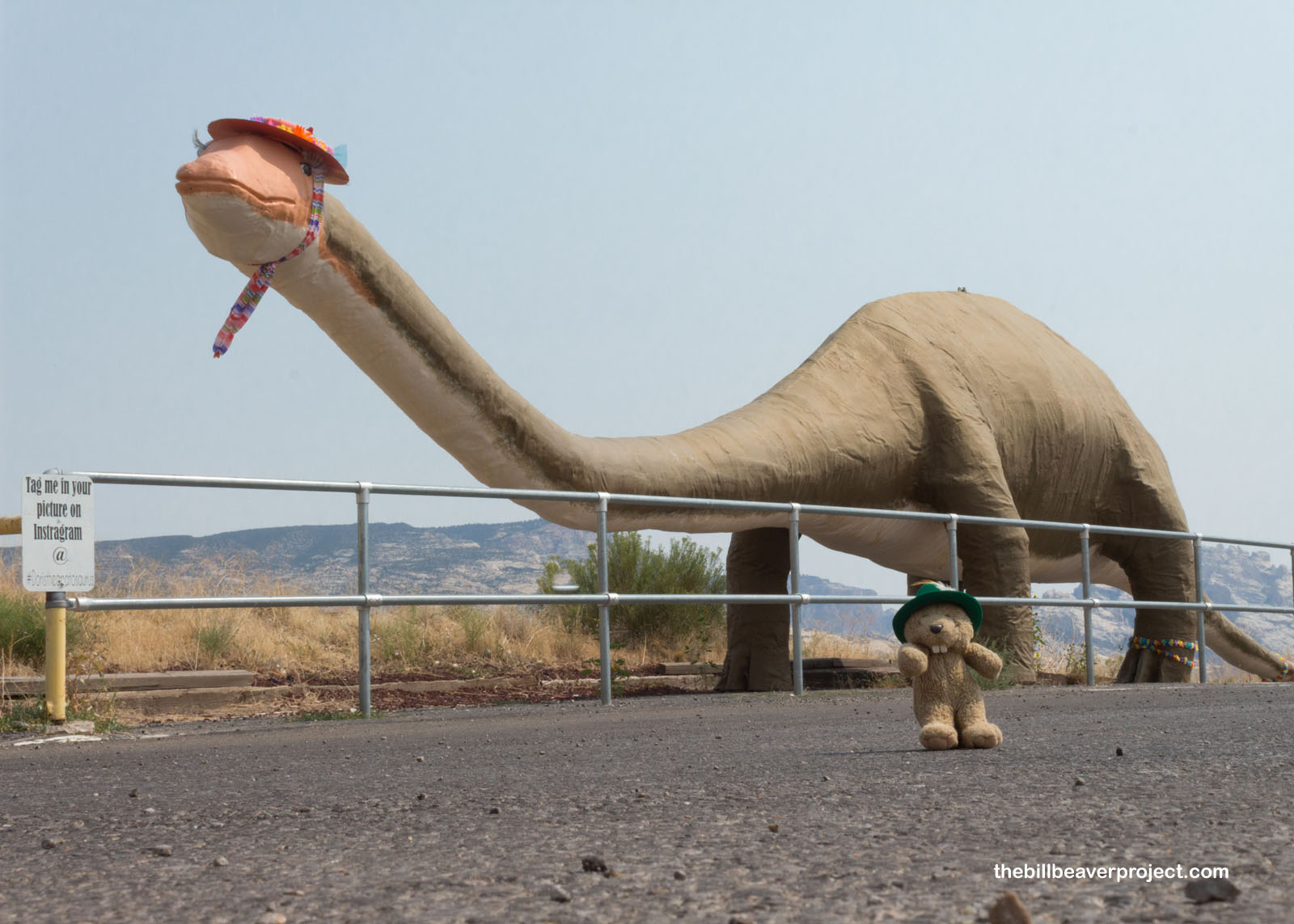 |
Also on account of the pandemic, the world famous Carnegie Quarry was accessible only by timed entry, just like Rocky Mountain National Park. Unlike Rocky Mountain National Park, these spaces did not fill up right away, and since I actually hiked a lot faster than I expected, it was super easy to change my entrance time from 2:00 PM to 12:00 PM!
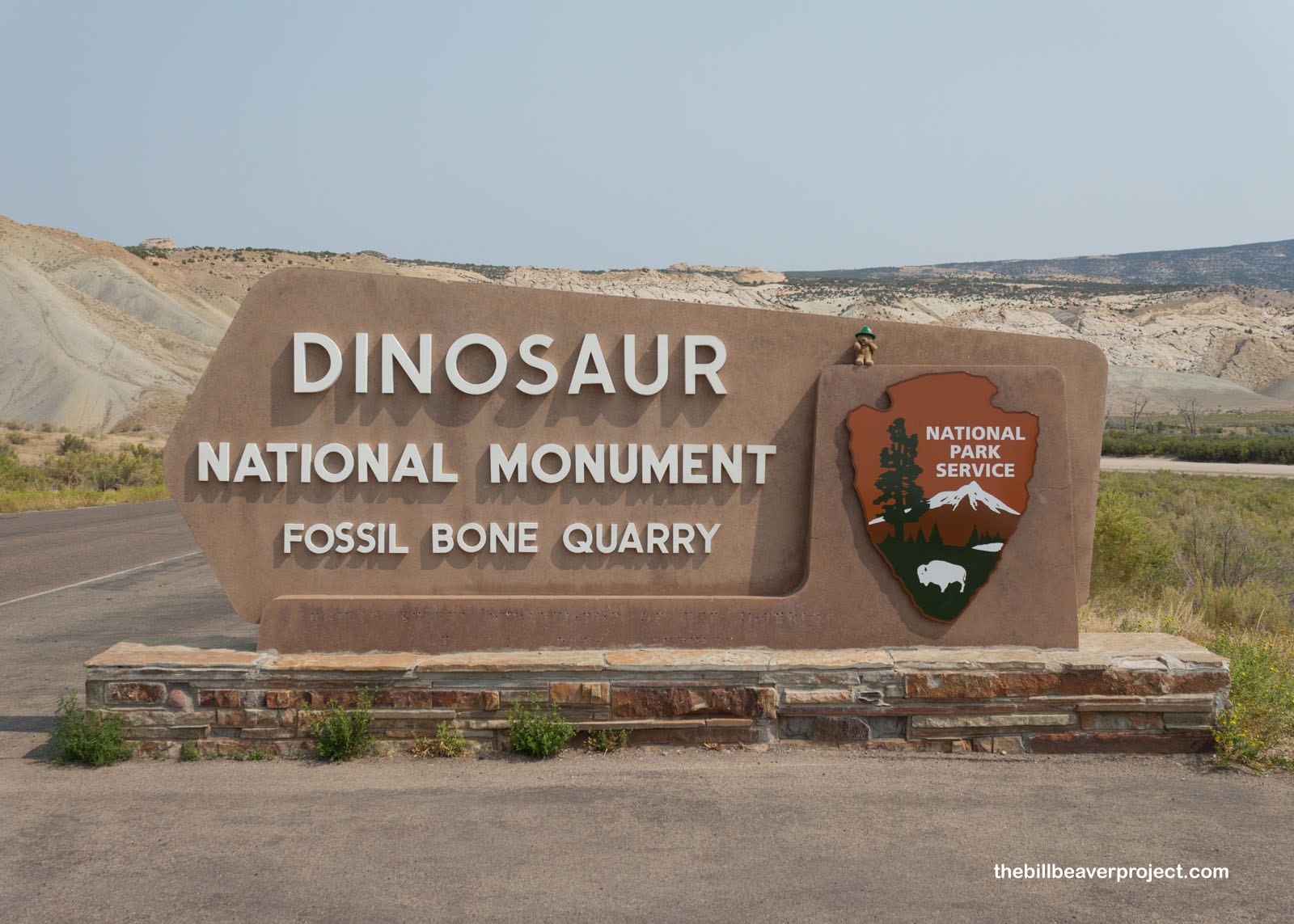 |
Another Jurassic dinosaur greeted me at the visitor center, a stegosaurus with a storied past! This very model, sculpted by Louis Paul Jonas, was the star of the Sinclair Dinoland exhibit at the New York World’s Fair from 1964 to 1965! After the fair, the dinosaurs toured the country, and this stegosaurus landed here at Dinosaur National Monument in the late 60s. It’s moved around a bit from the quarry to the visitor center, and changed colors a few times, but today, this august reptile is retired in style as a docent for all to enjoy!
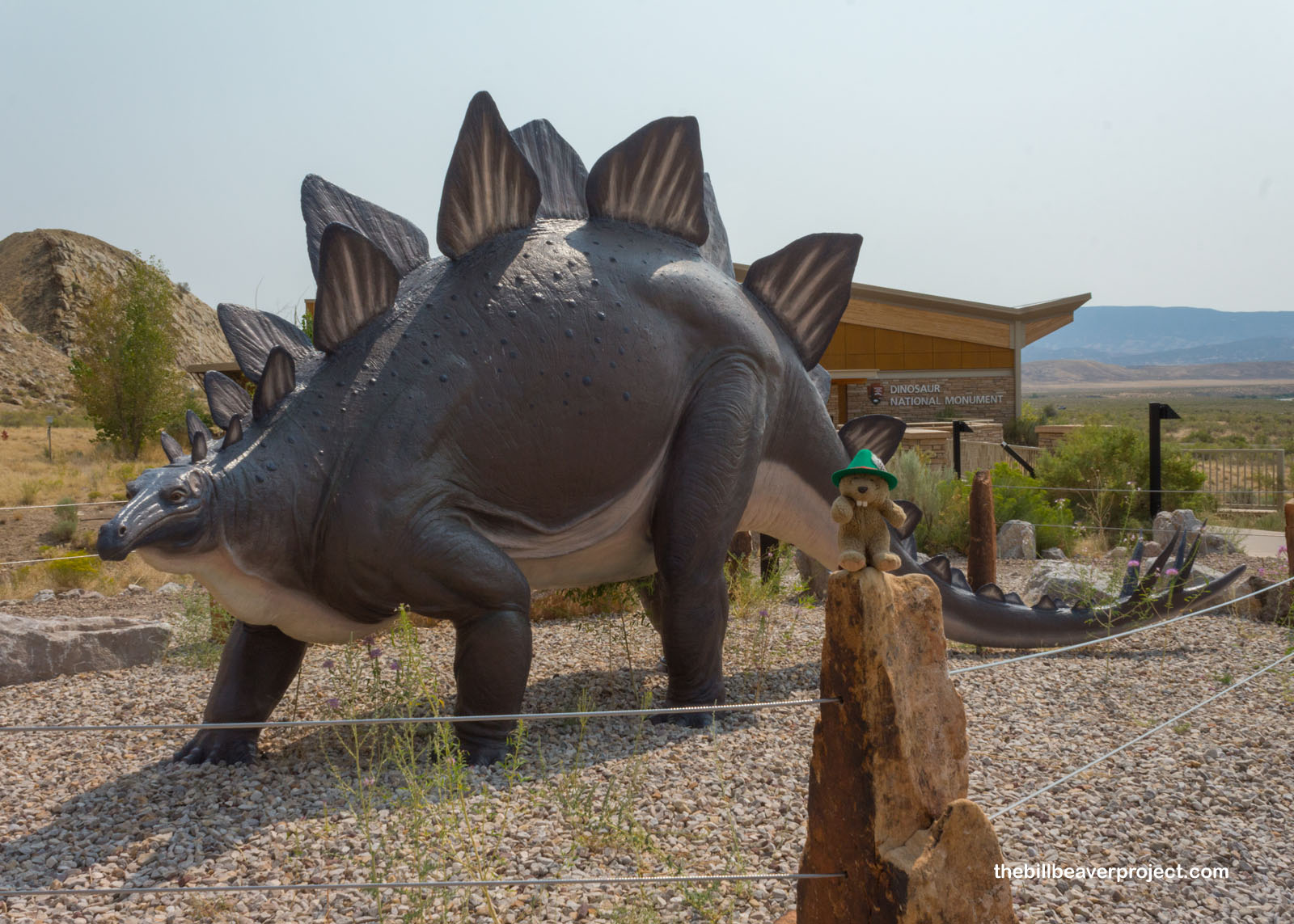 |
On the way in, I was reminded that these are unusual times! Since yesterday, the state of Colorado picked up 356 new COVID-19 cases, all of Utah gained 463, and Los Angeles County added 1,759! I sure am grateful to be able to travel these days, but I definitely need to remind folks that beavers can’t catch or transmit the novel coronavirus! If you’re human, wear a mask, and don’t be like the careless parents, kids, and grandma that shared the tram ride with me to the visitor center!
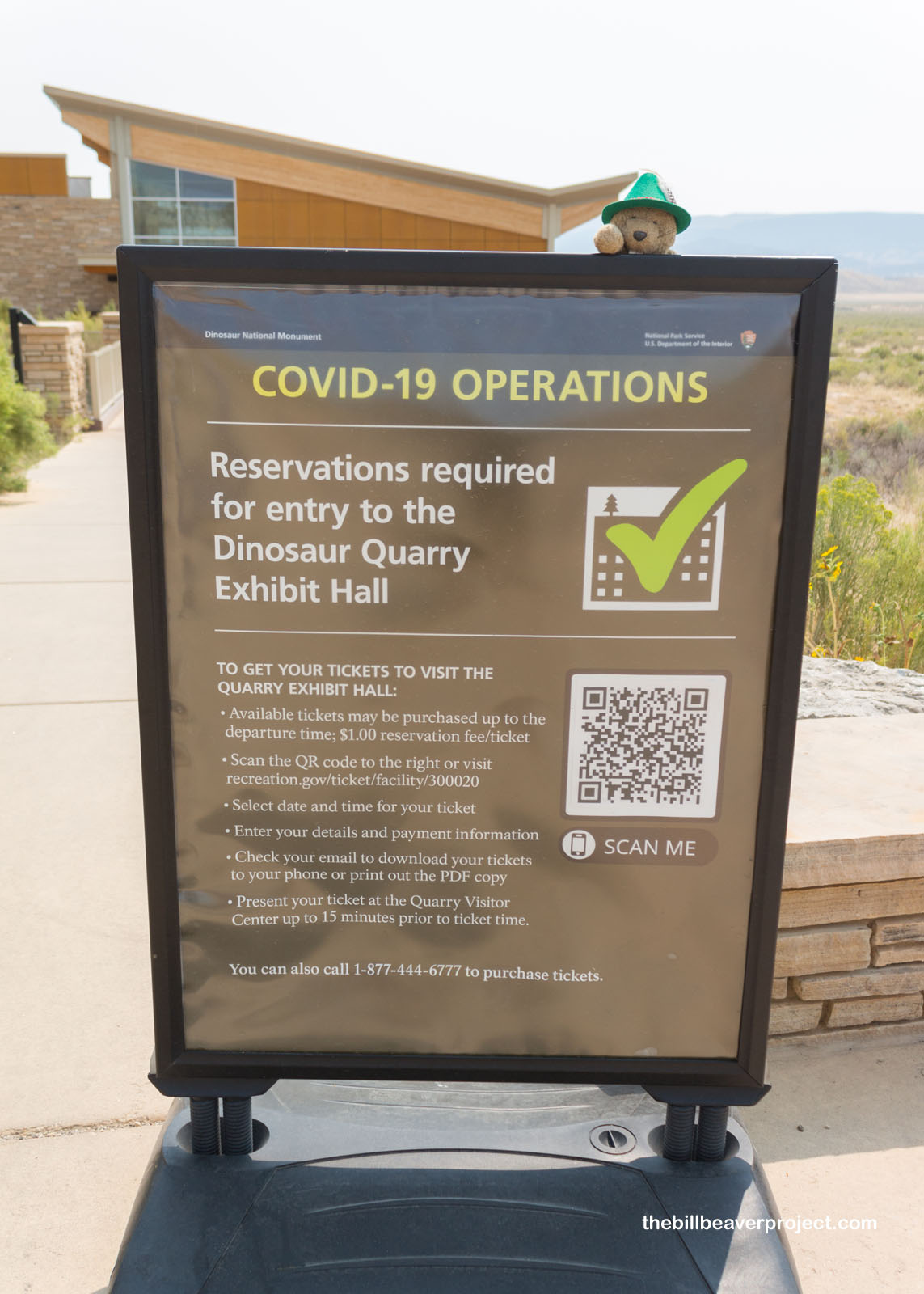 |
I sure was glad to be off the tram and behold the Quarry Exhibit Hall at last! This visitor center houses one of the most amazing collections of Jurassic fossils ever discovered! It was built as part of the National Park Service’s Mission 66 program, a huge rebuilding effort after World War II! It’s on the National Register of Historic Places, both for its part in this program and for its “butterfly” steel frame shape, part of the Park Service Modern architectural style!
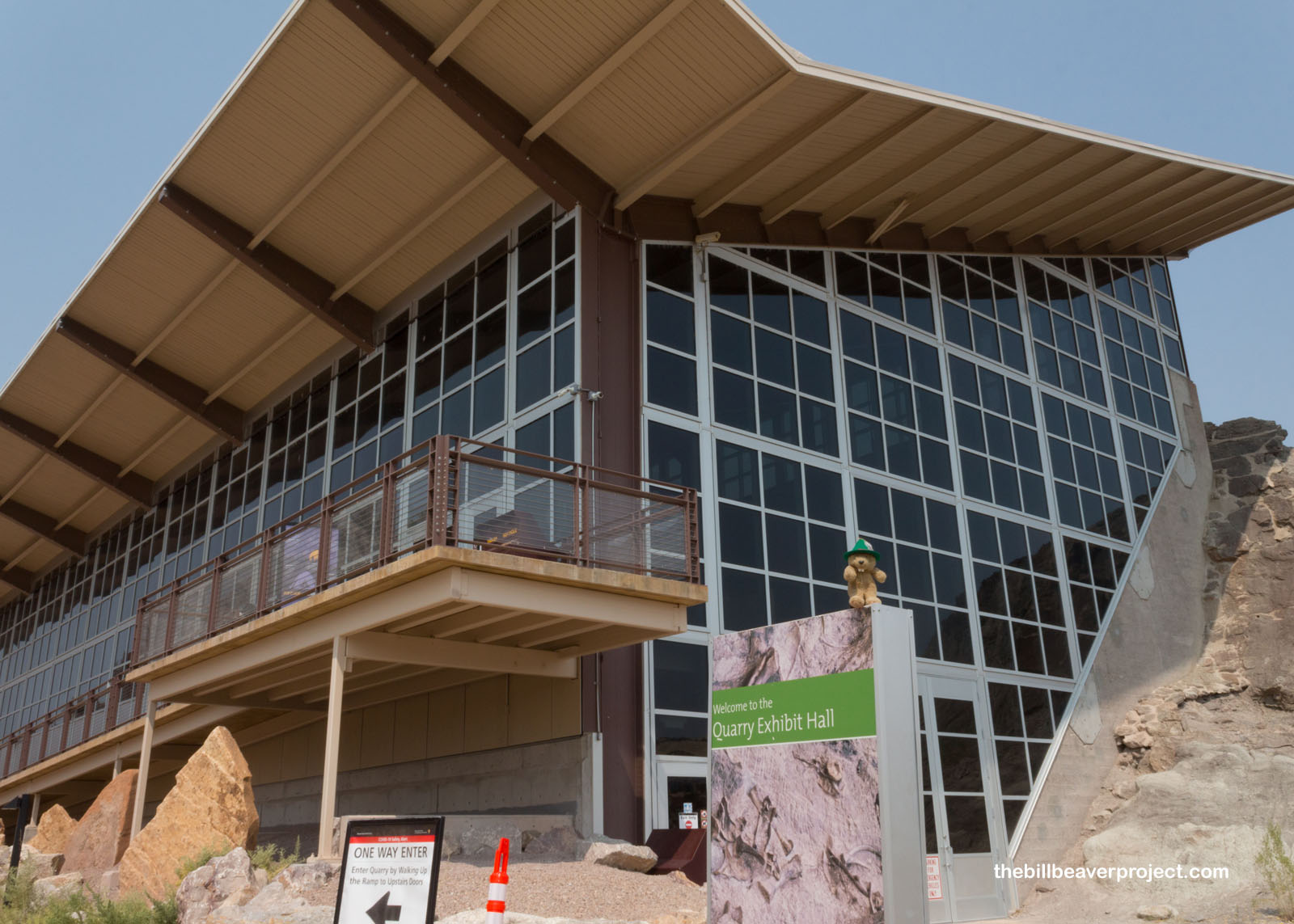 |
Anyway, the real treasure of the exhibit hall is the huge wall of densely packed dinosaur fossils, still in place where Earl Douglass started digging on August 17, 1909! Over 500 dinosaurs have been unearthed from this Morrison formation since, not to mention the thousands of smaller fossils, like crocodiles, turtles, clams, insects, and plants that help create a more complete picture of this time in prehistory!
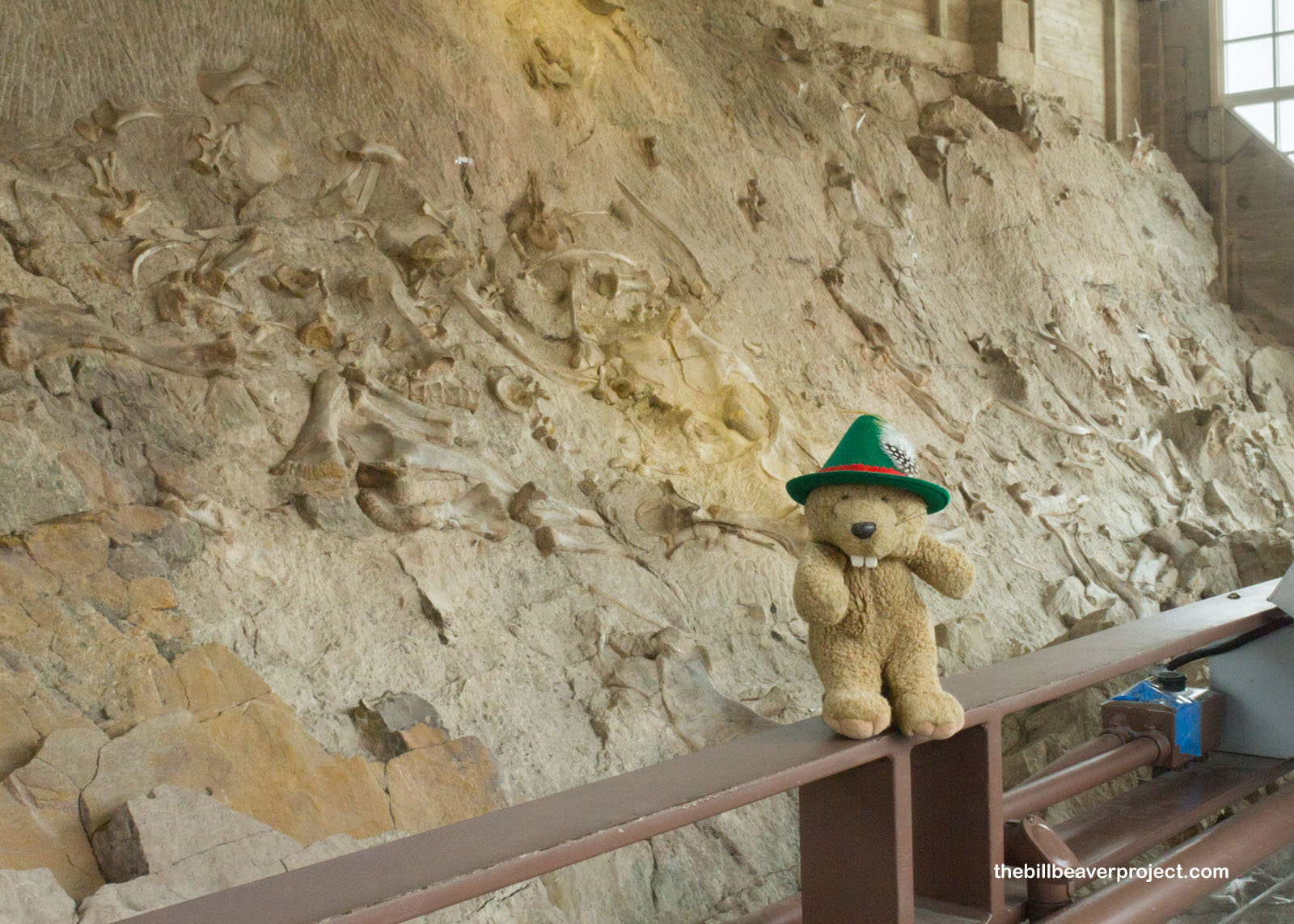 |
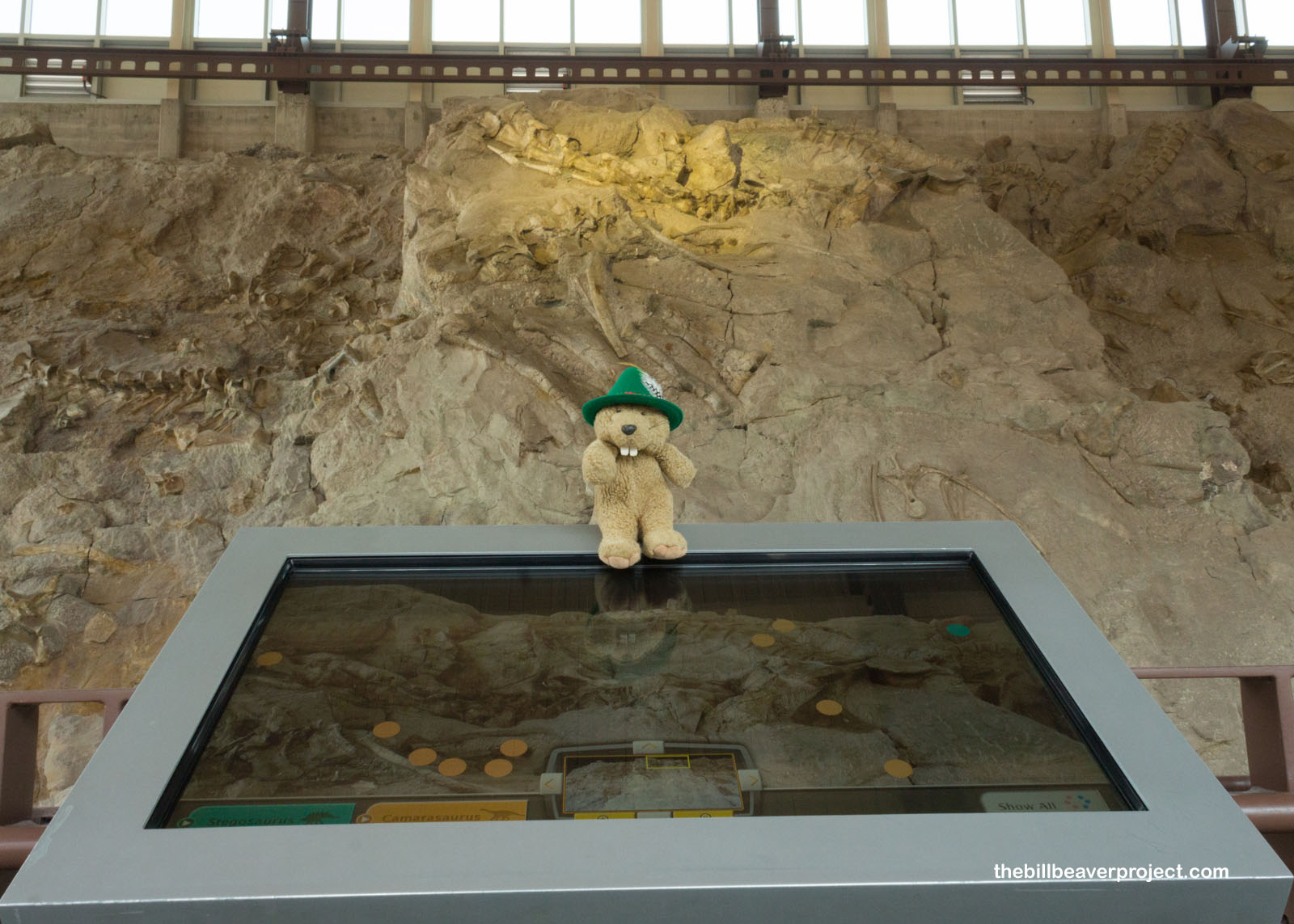 |
The most abundant dinosaur here is Camarosaurus lentus, which for a long time was the only sauropod species with good quality skull specimens. In fact, a camarosaurus skull once sat on an apatosaurus body at the American Museum of Natural History, creating the famous “brontosaurus!” After the first apatosaurus skull was discovered at this very quarry in 1909, the chimerical brontosaurus went extinct in paleontology but lived on in the world of television and children’s books!
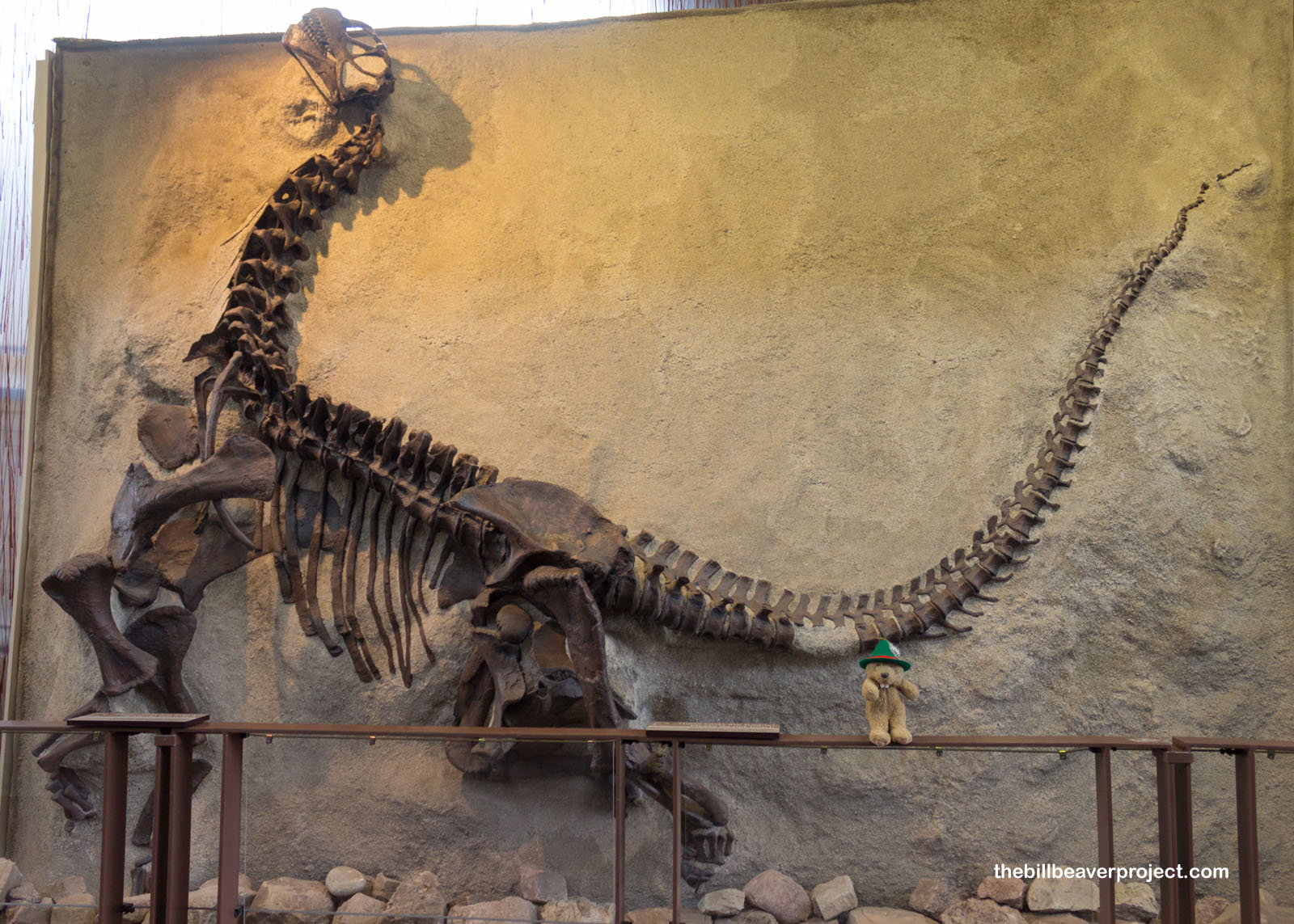 |
The most abundant predator found here is allosaurus, Utah’s state fossil! In 1924, this quarry produced one of the most complete skeletons and best preserved allosaurus skulls ever found! In fact, two species of this 30-foot, pack-hunting, T-Rex Lite have been found here: the famous Allosaurus fragilis and the newly described (as in January 2020) Allosaurus jimmadseni!
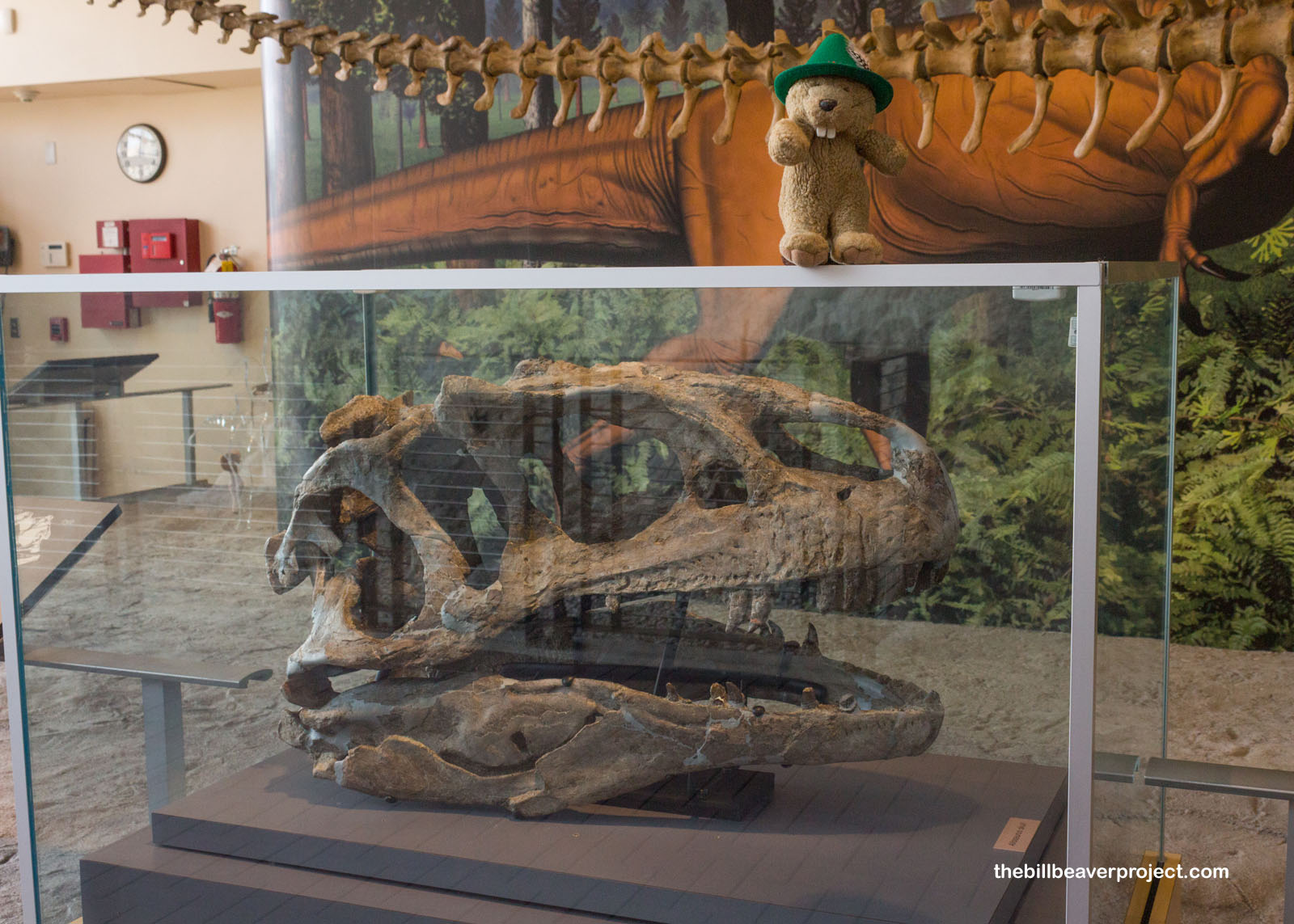 |
Fossils from this quarry have gone out to renowned museums around the world, including the Carnegie Museum in Pittsburgh, the Smithsonian in Washington, DC, and the American Museum of Natural History in New York City! This place is a real treasure of knowledge about a past long before humans or beavers roamed the Earth!
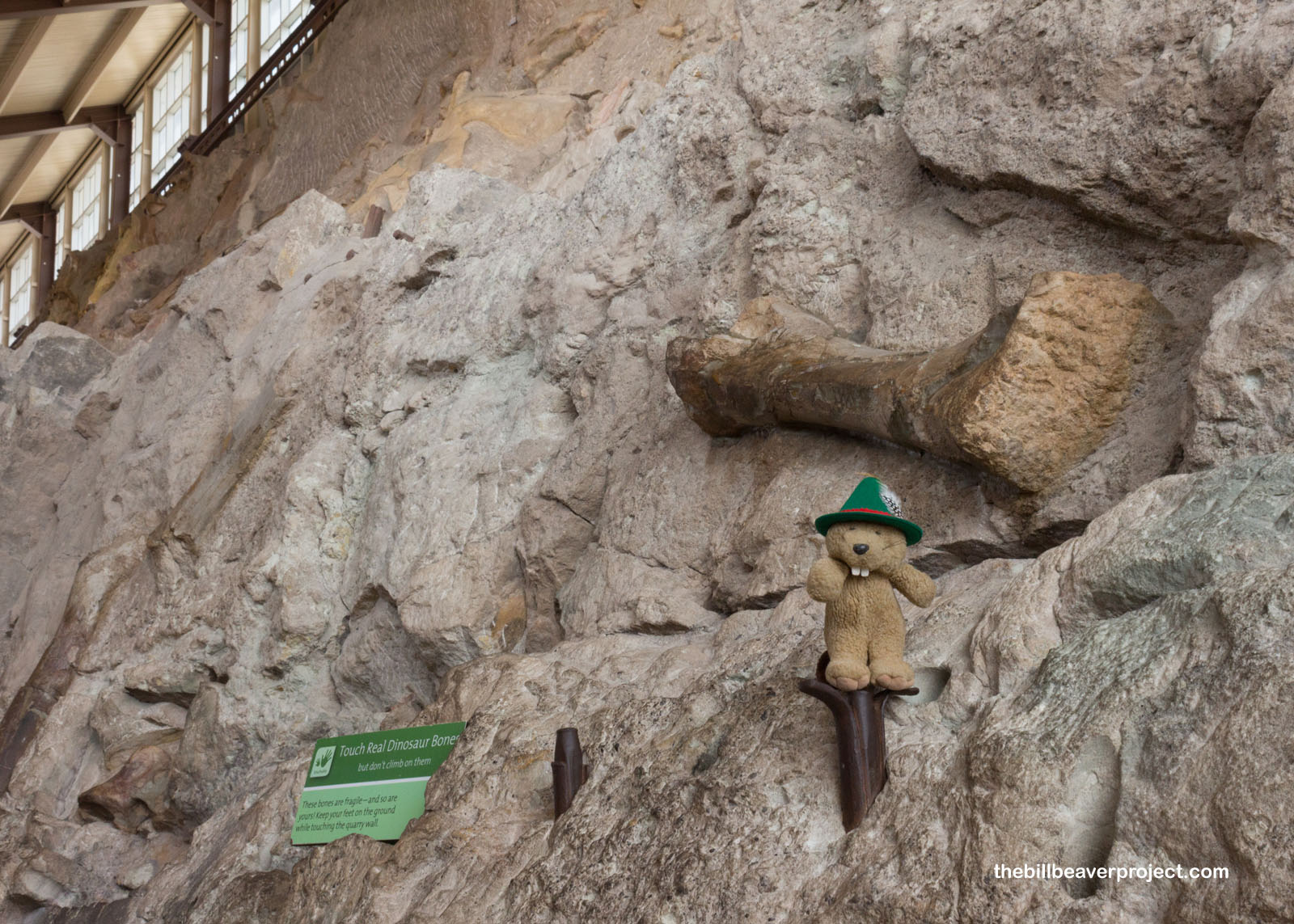 |
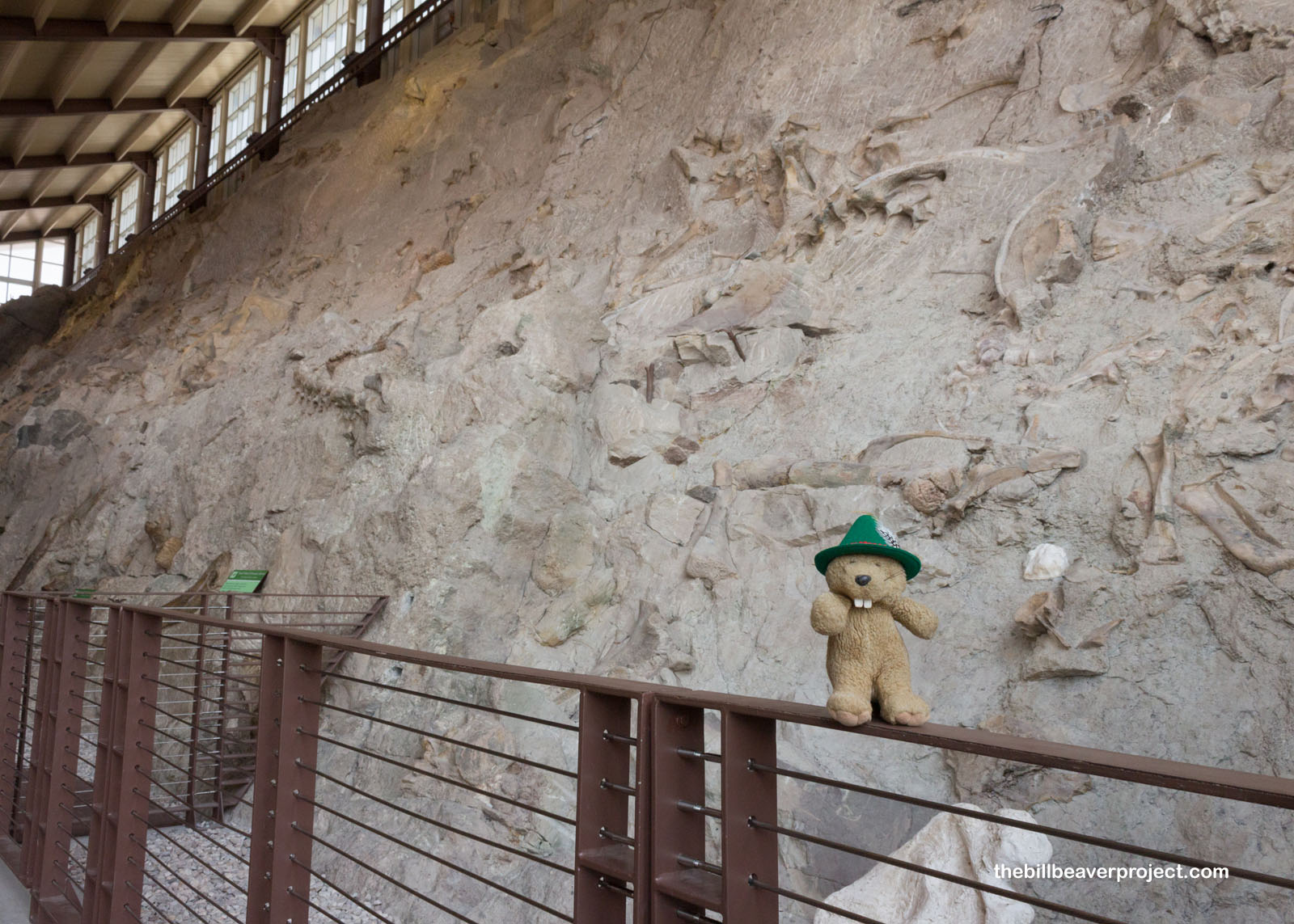 |
I wanted to spend more time in here, but I was getting annoyed with all the visitors walking around without masks on. So, I decided to make my way back to the parking lot via the Fossil Discovery Trail, one of the few trails in the park where you can see dinosaur fossils outside!
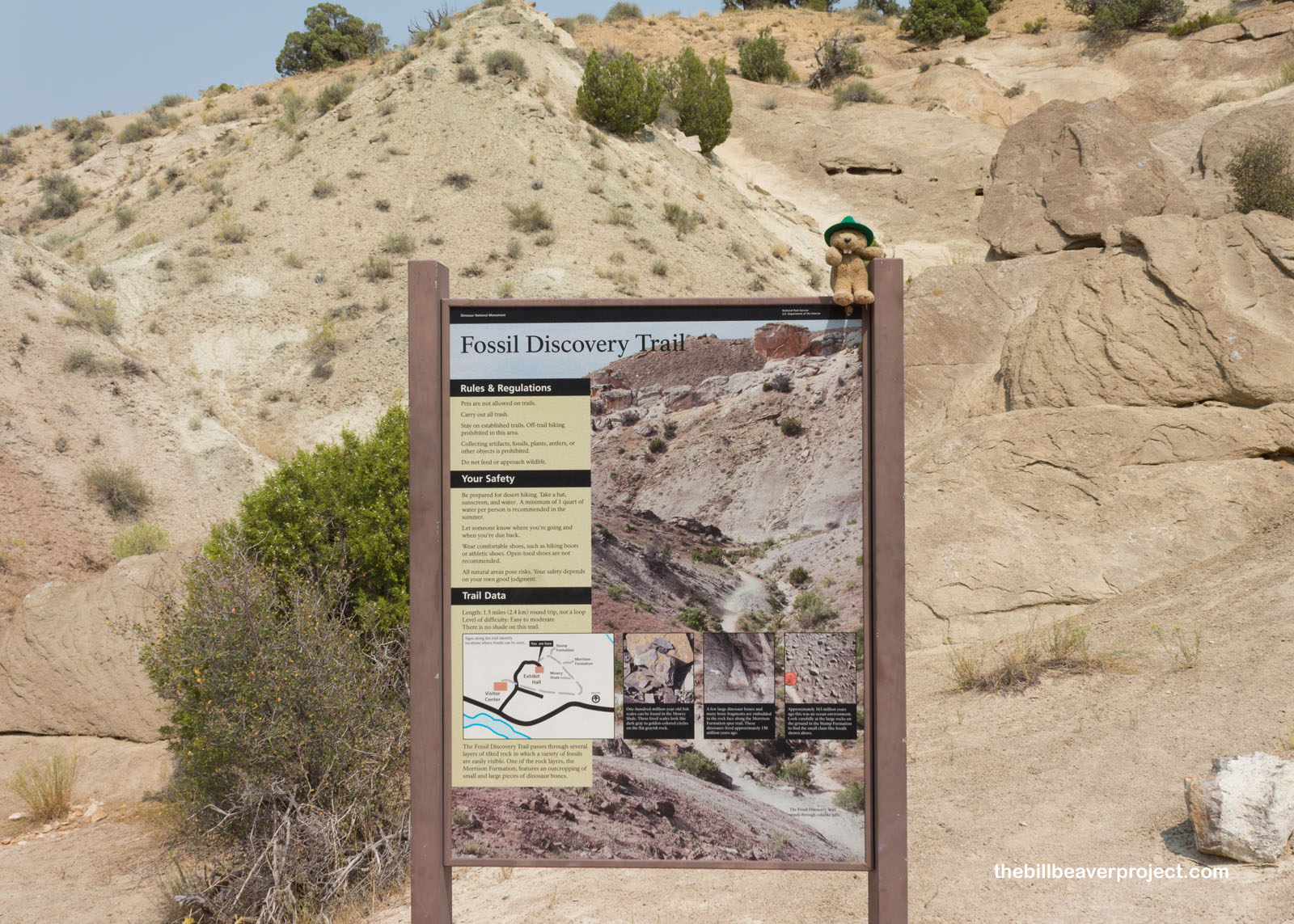 |
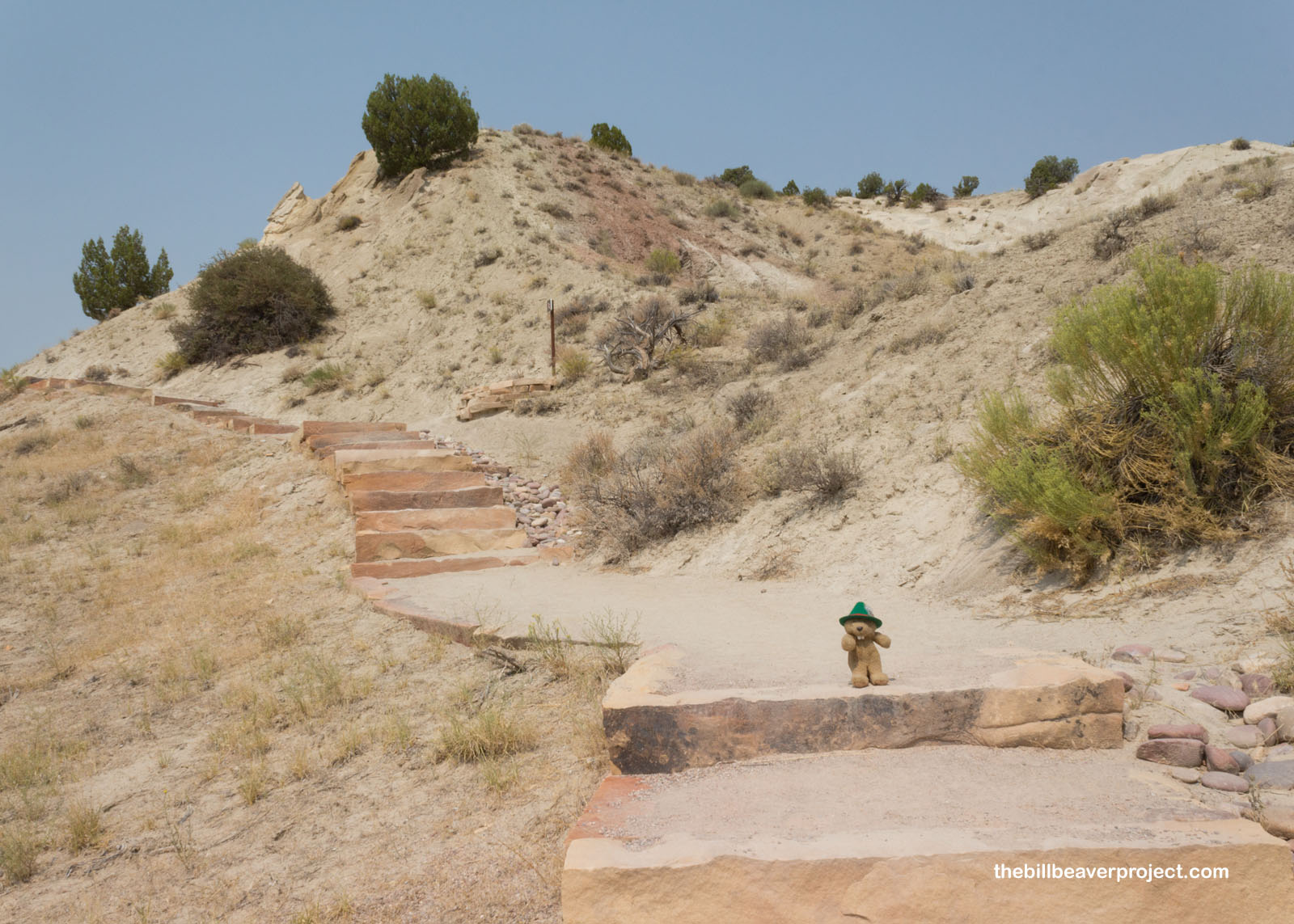 |
Sure enough, there were a few sauropod leg bones sticking out of the rock! It’s not clear which of the quarry’s five species sauropod they once belonged to, but they were still pretty neat to see up close and personal!
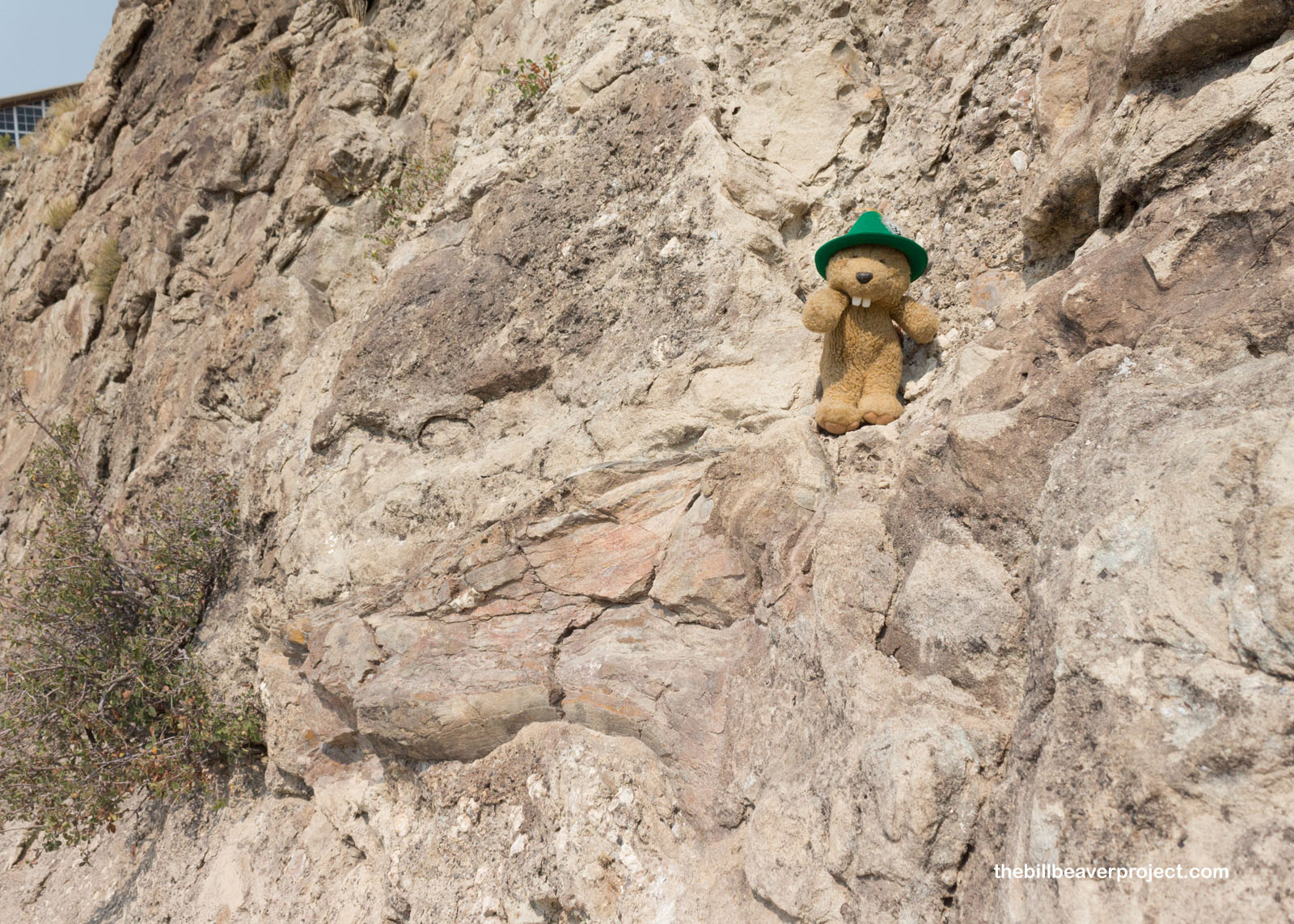 |
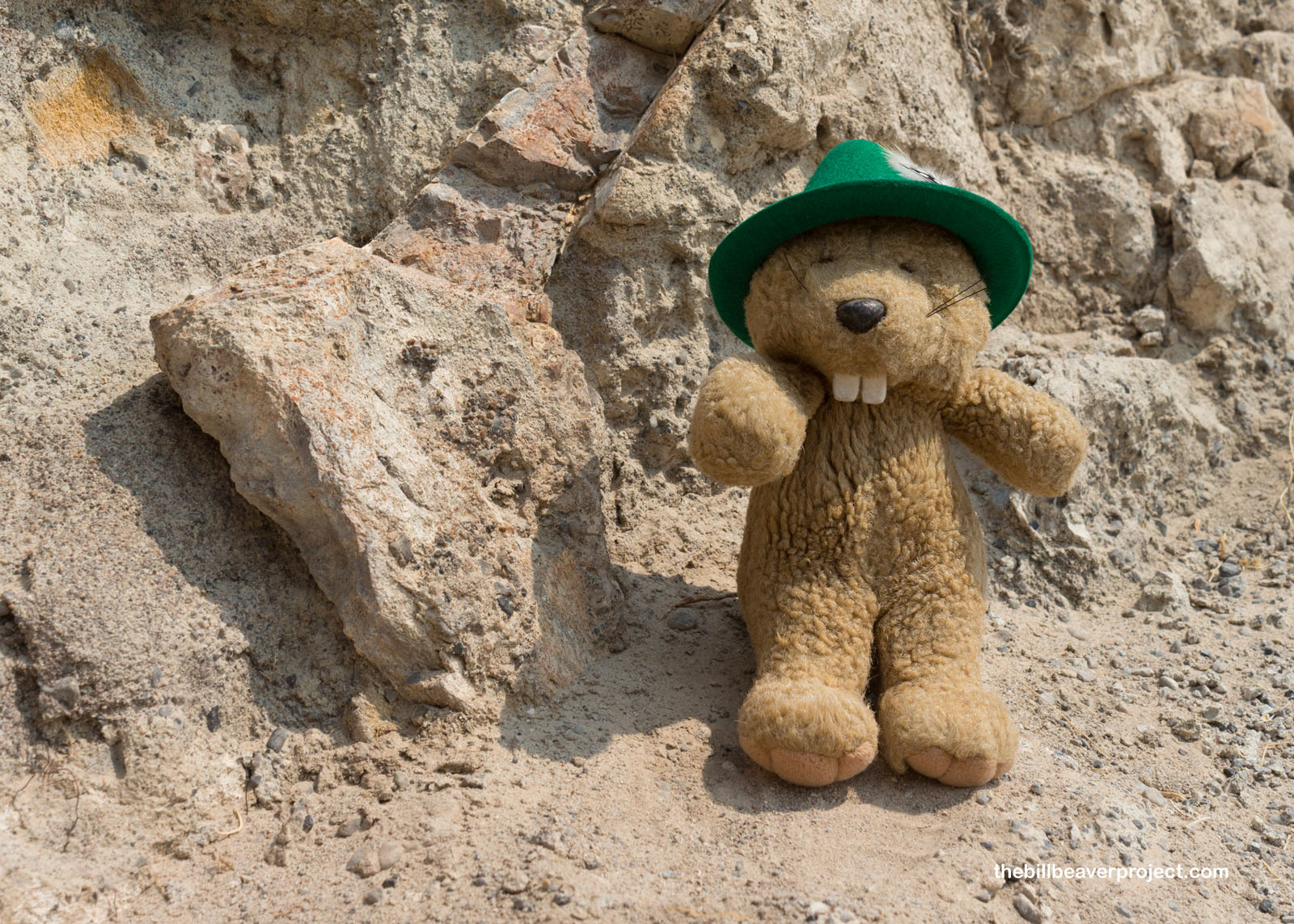 |
It was a long, hot slog back to the parking lot, but along the way, I got some great views of the red and purple Morrison Formation, from which we get those famous Jurassic Fossils! Named after Morrison, Colorado, center of the famed Bone Wars between Othniel Marsh and Edward Cope, this 156-million year old formation stretches from New Mexico to Saskatchewan! It gets its signature colors from the mudstone, sandstone, siltstone, and limestone that make it up!
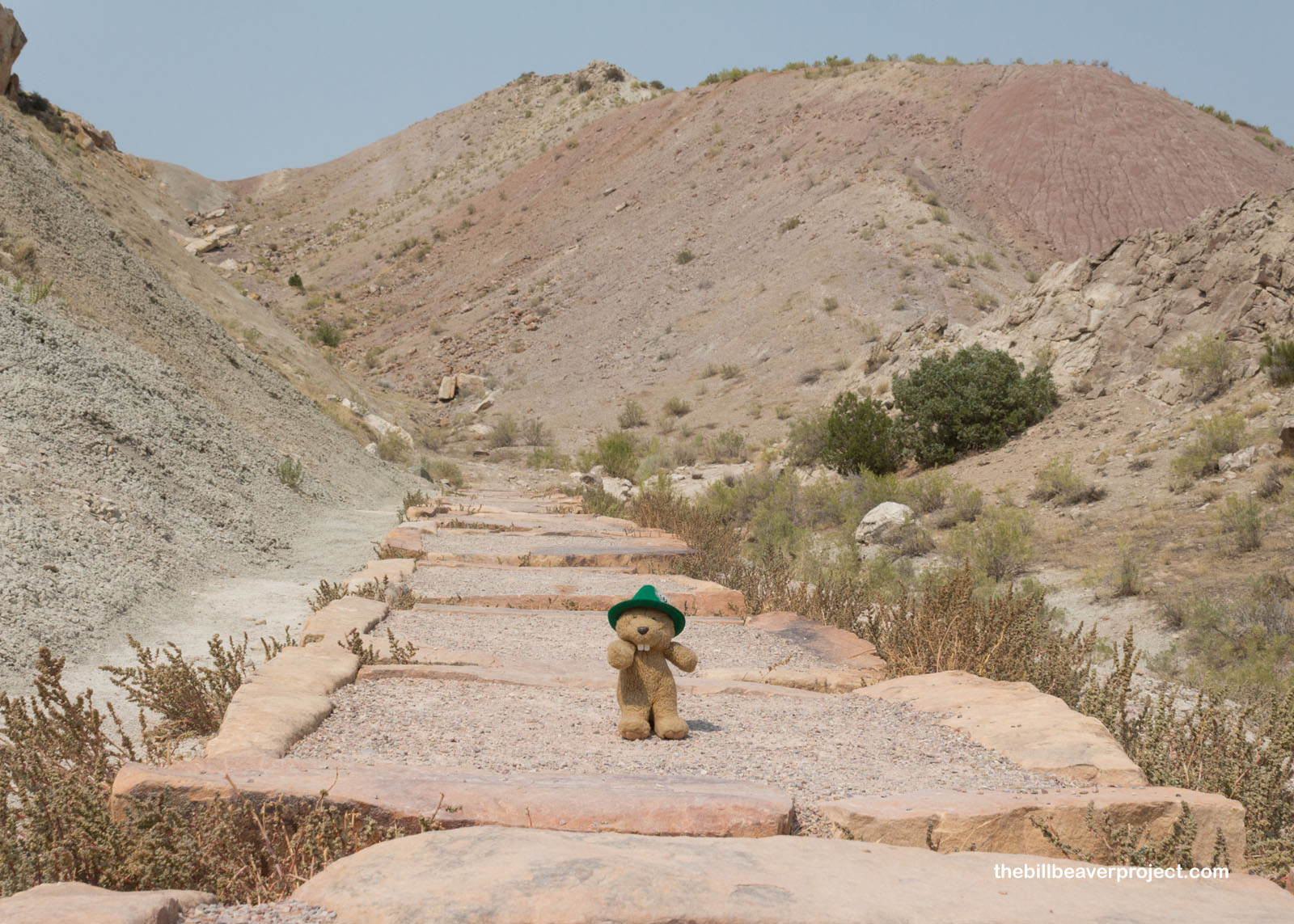 |
As I neared the parking lot (and a water stop), I paused at one more ancient relic: a deer petroglyph, left behind by the Fremont Culture who lived here between 800 and 1,200 AD! Fossils sure didn’t go unnoticed by Native American tribes, who incorporated these ancient traces into stories about ancient creatures who shaped the world then disappeared! Across the state in western Utah, Ute tribes have also used trilobites as protective talismans for hundreds to thousands of years!
 |
Yes folks, no matter how much time passes, dinosaurs and fossils at large have a powerful hold on our collective imagination! What must it have been like when the world was hotter and more humid, when the ground shook beneath reptiles that today look up to most everyone else? As I passed through Vernal, Utah, capital of Dinosaur Country, I wondered what other neat discoveries still lurked in eastern Utah’s rocks. With millions of years of prehistory before us, the possibilities are endless!
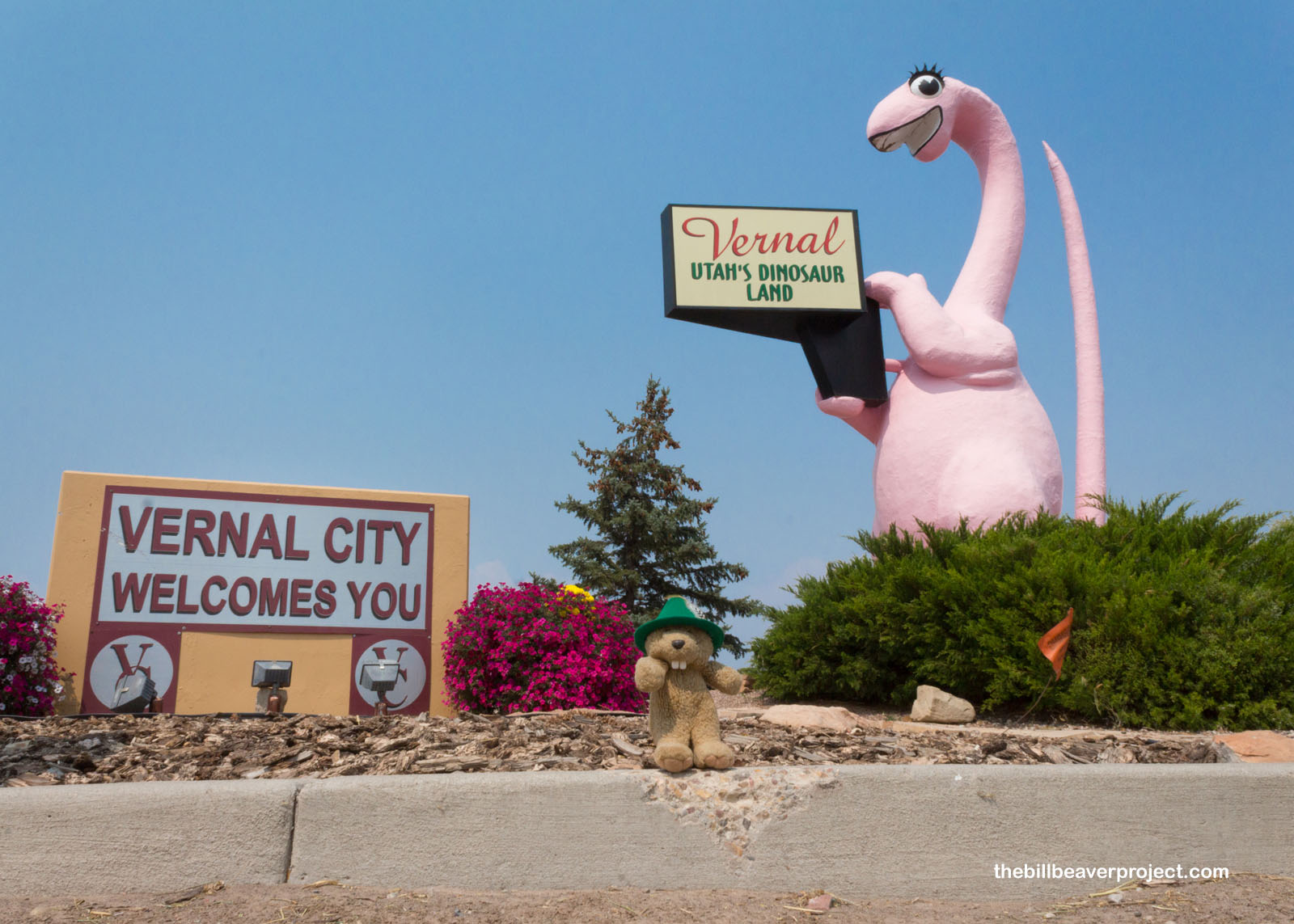 |
I’m going to take a break in Salt Lake and visit with Flatty before heading home. Stay tuned for more adventures in more ancient places!
‘Saur ya later!

 Previous Day |
Total Ground Covered: 2,428.0 mi (3,907.5 km) |
 Next Day |
